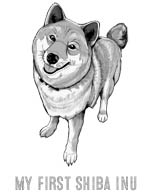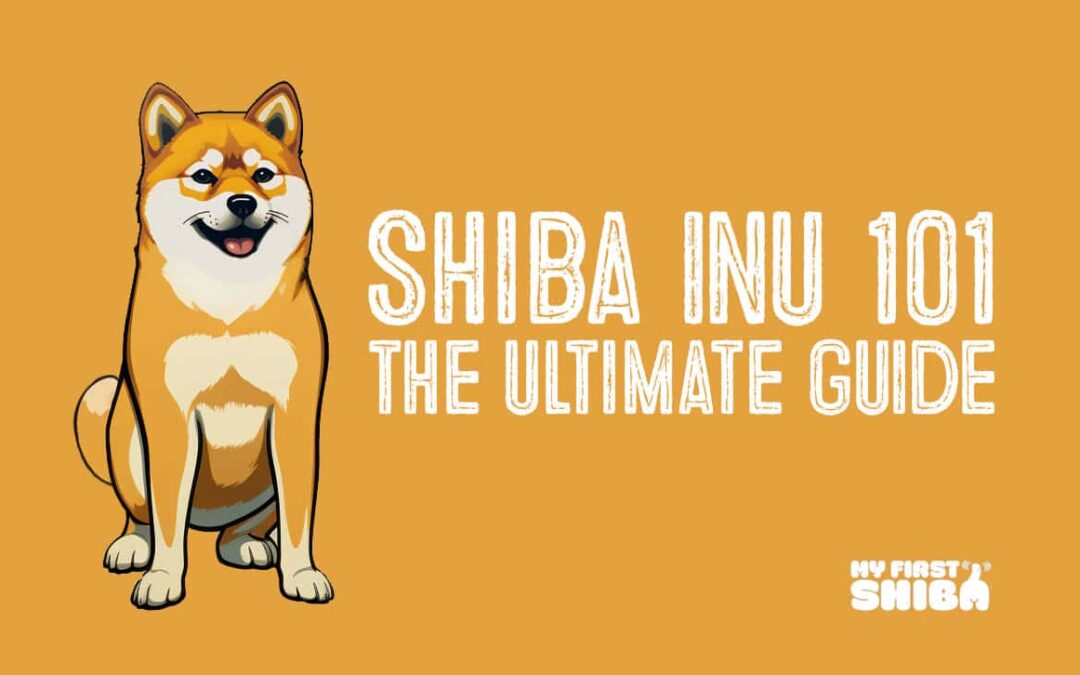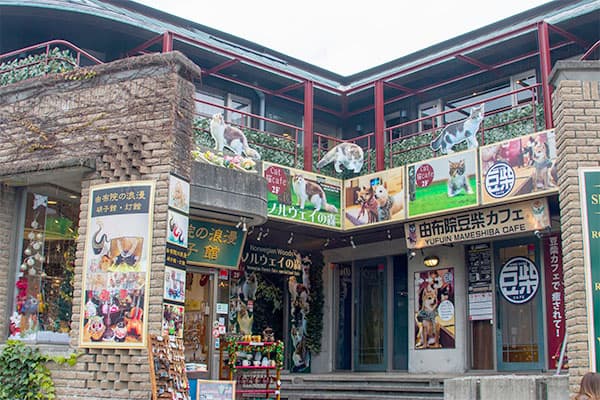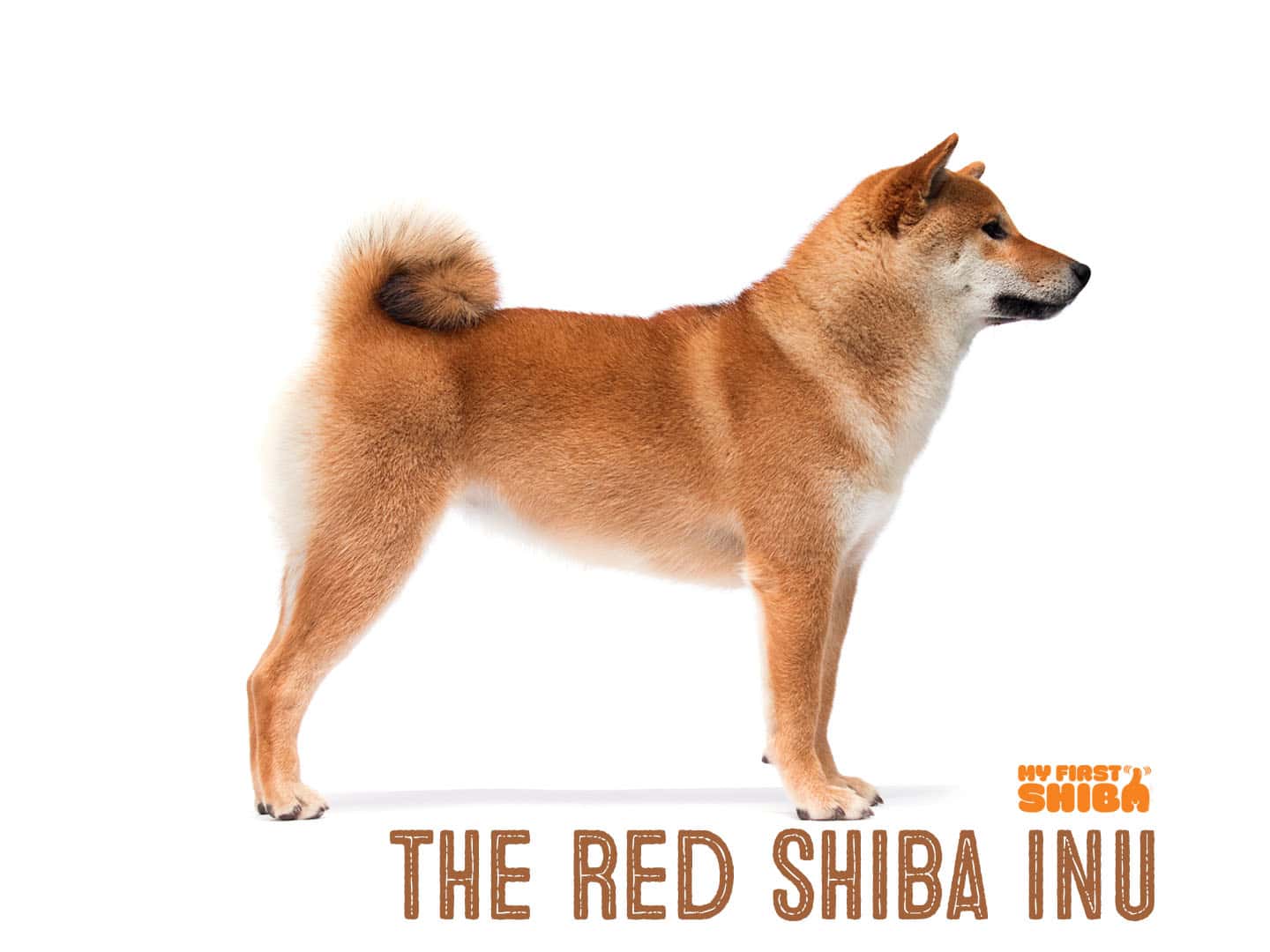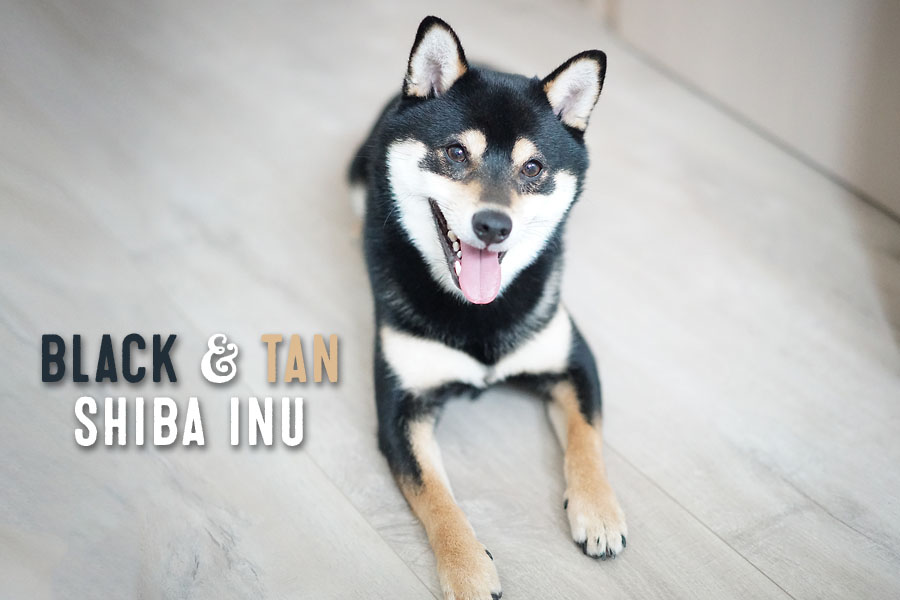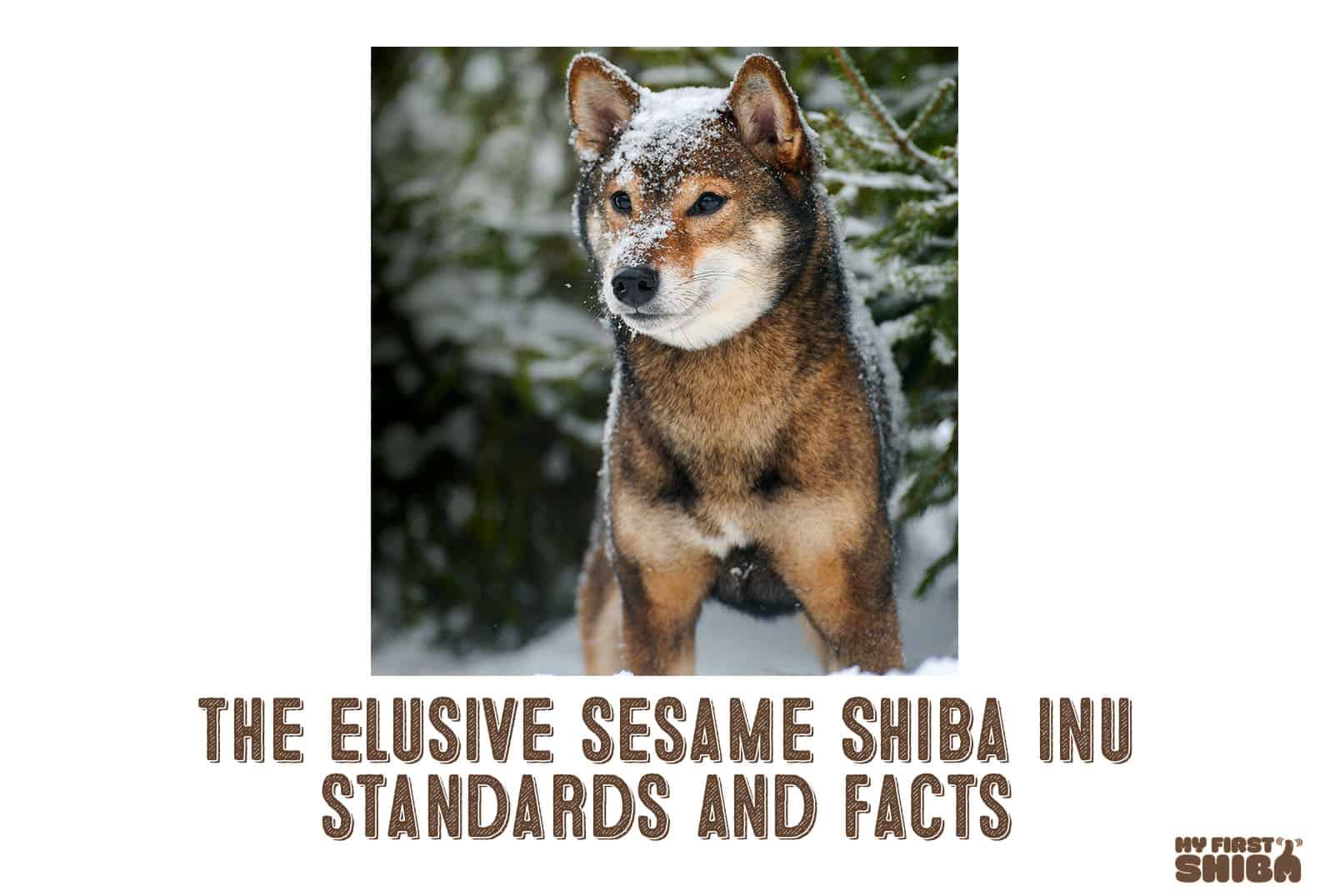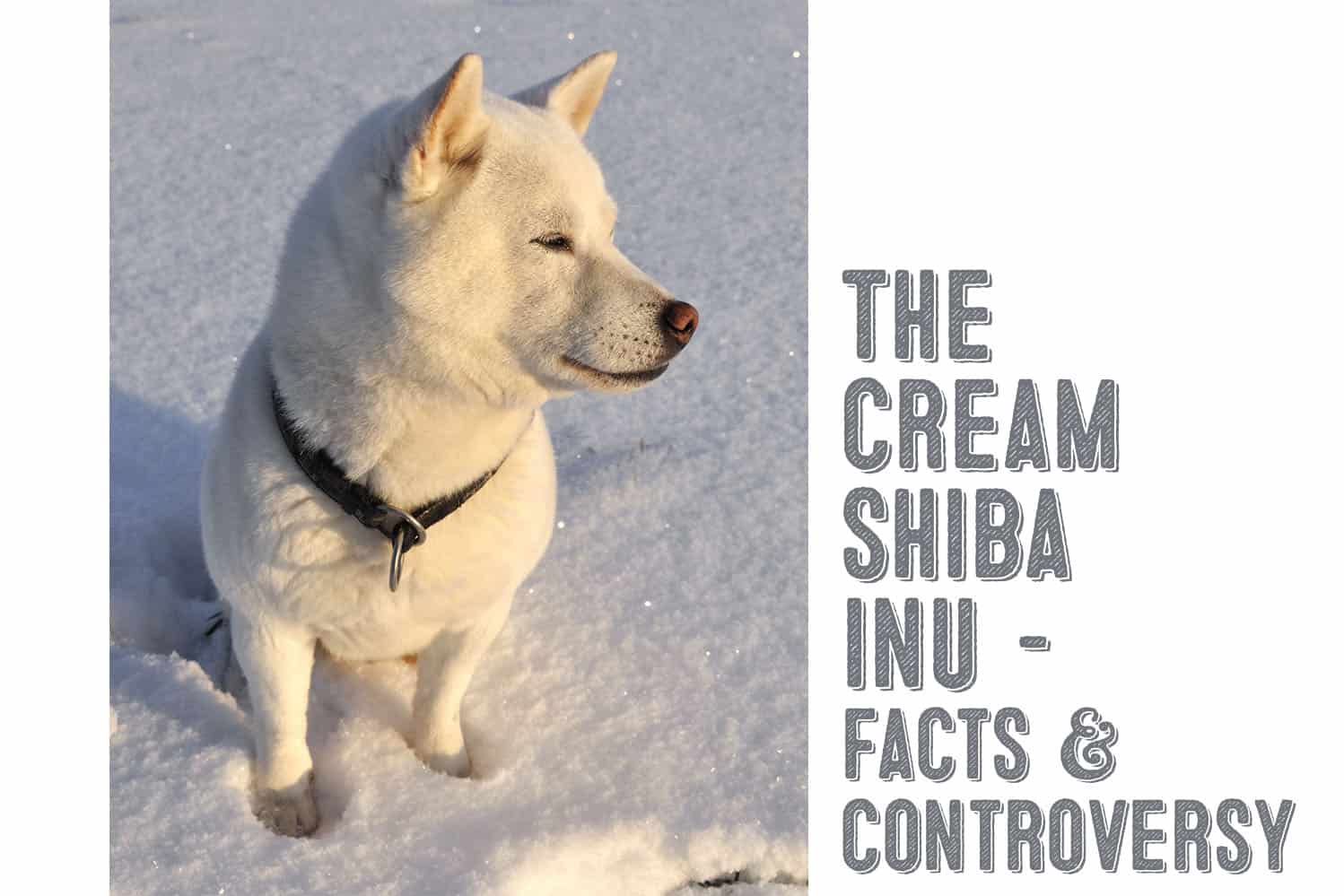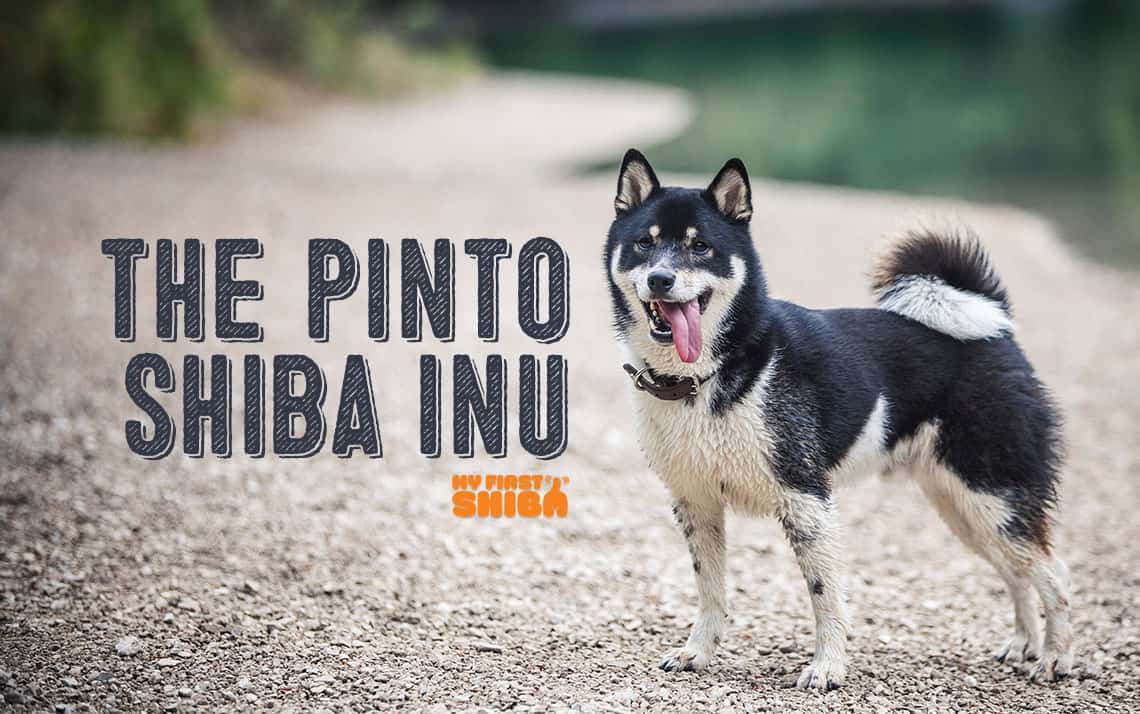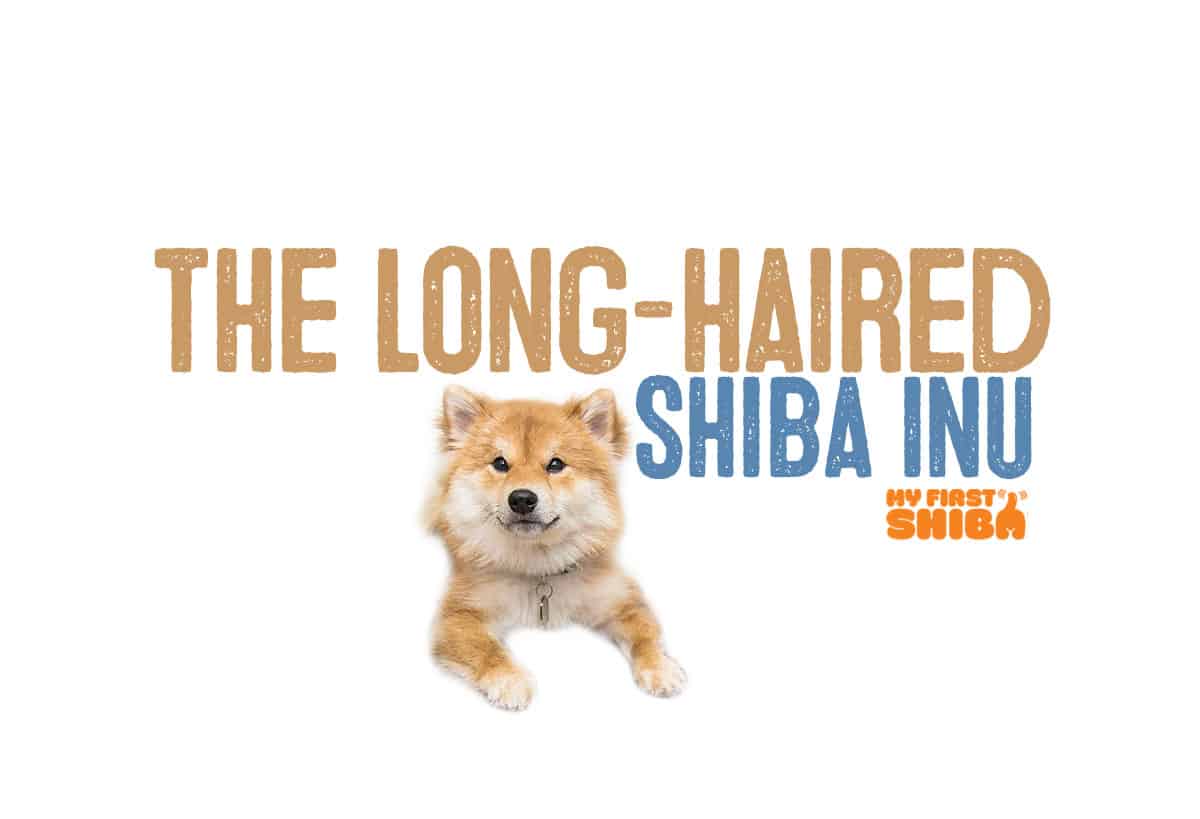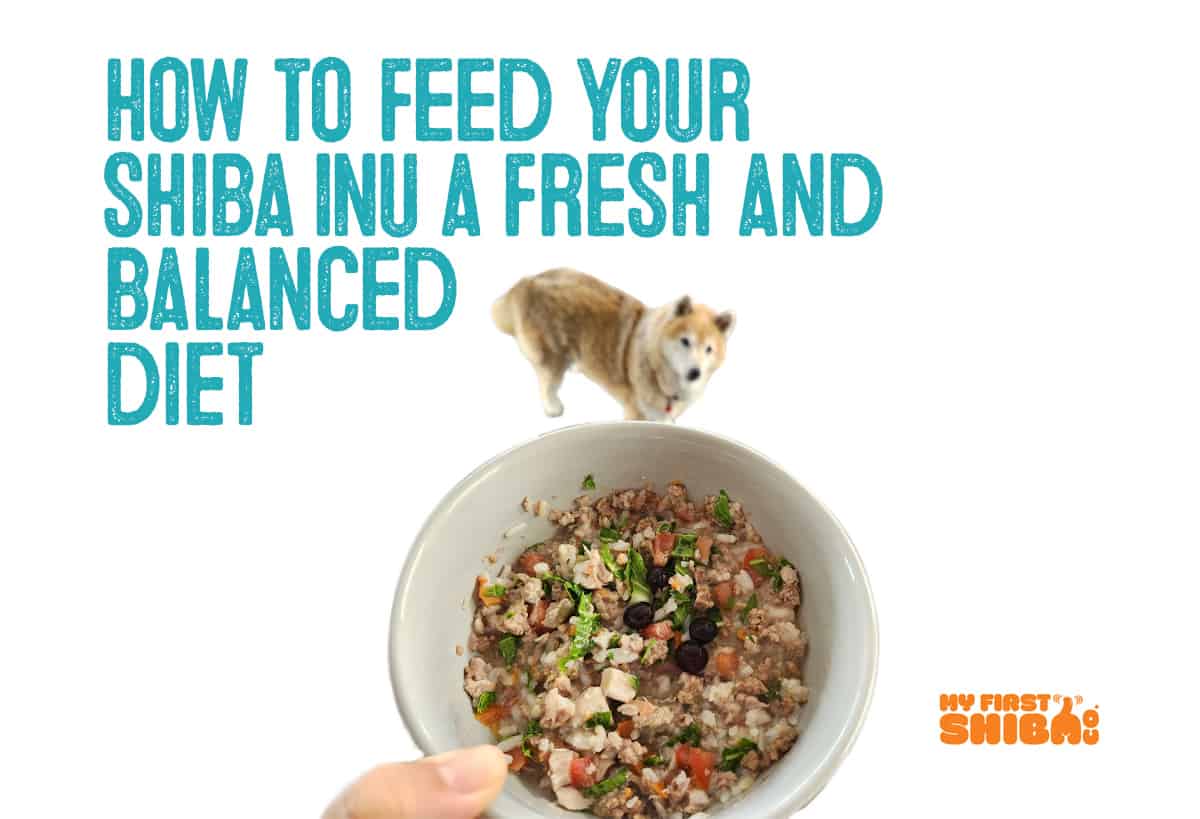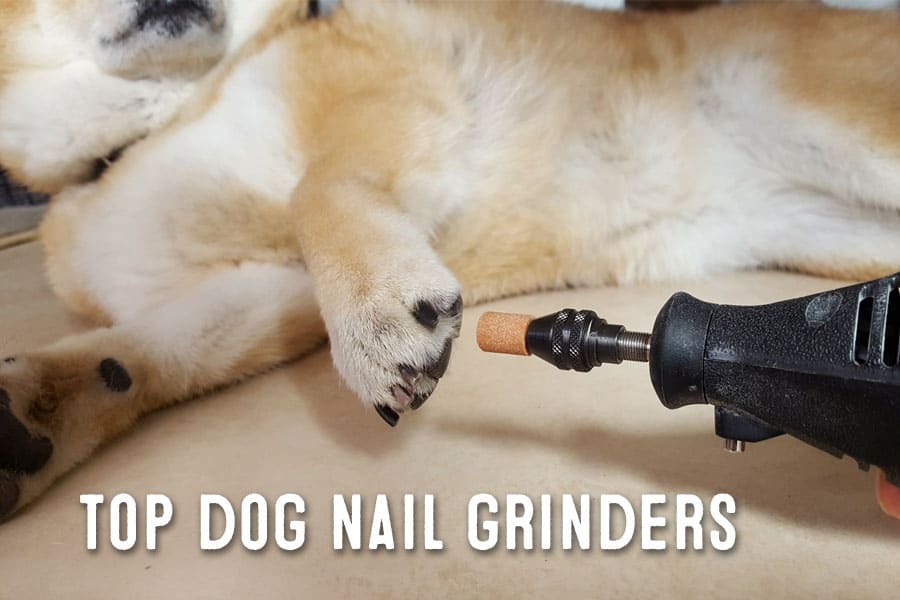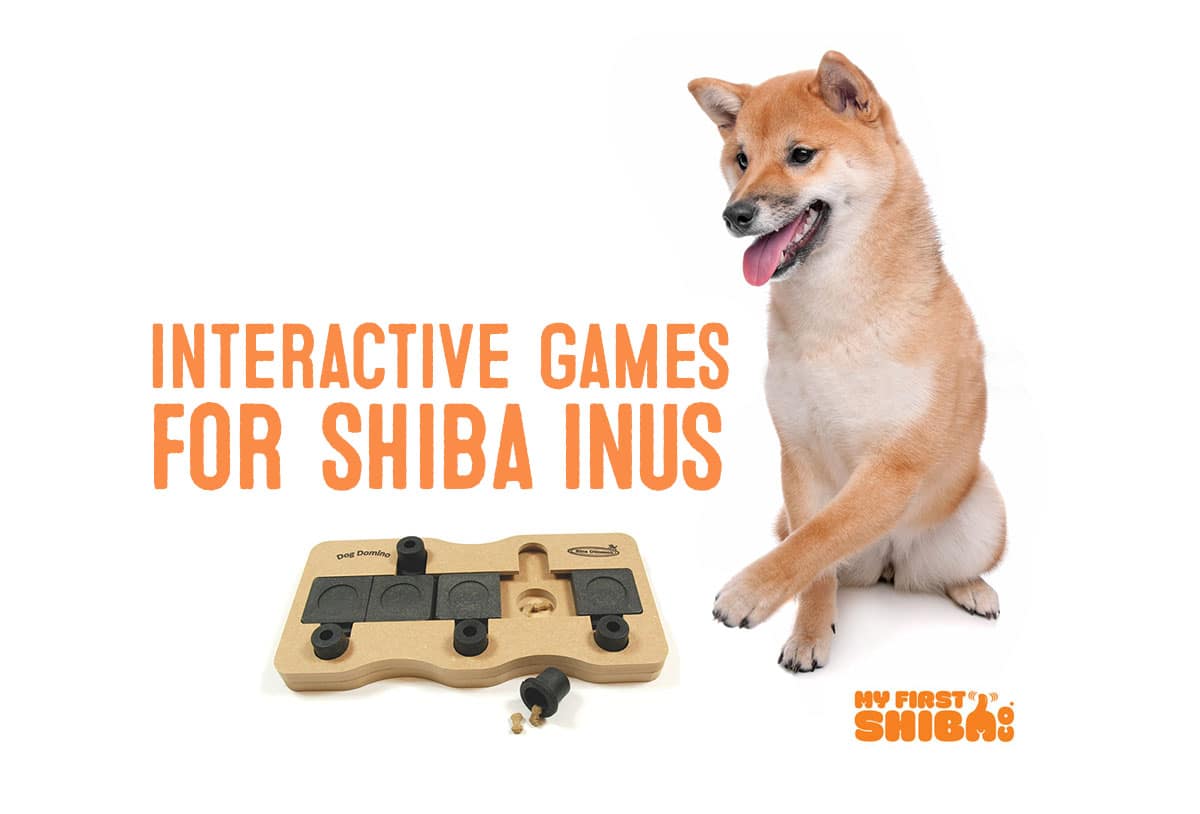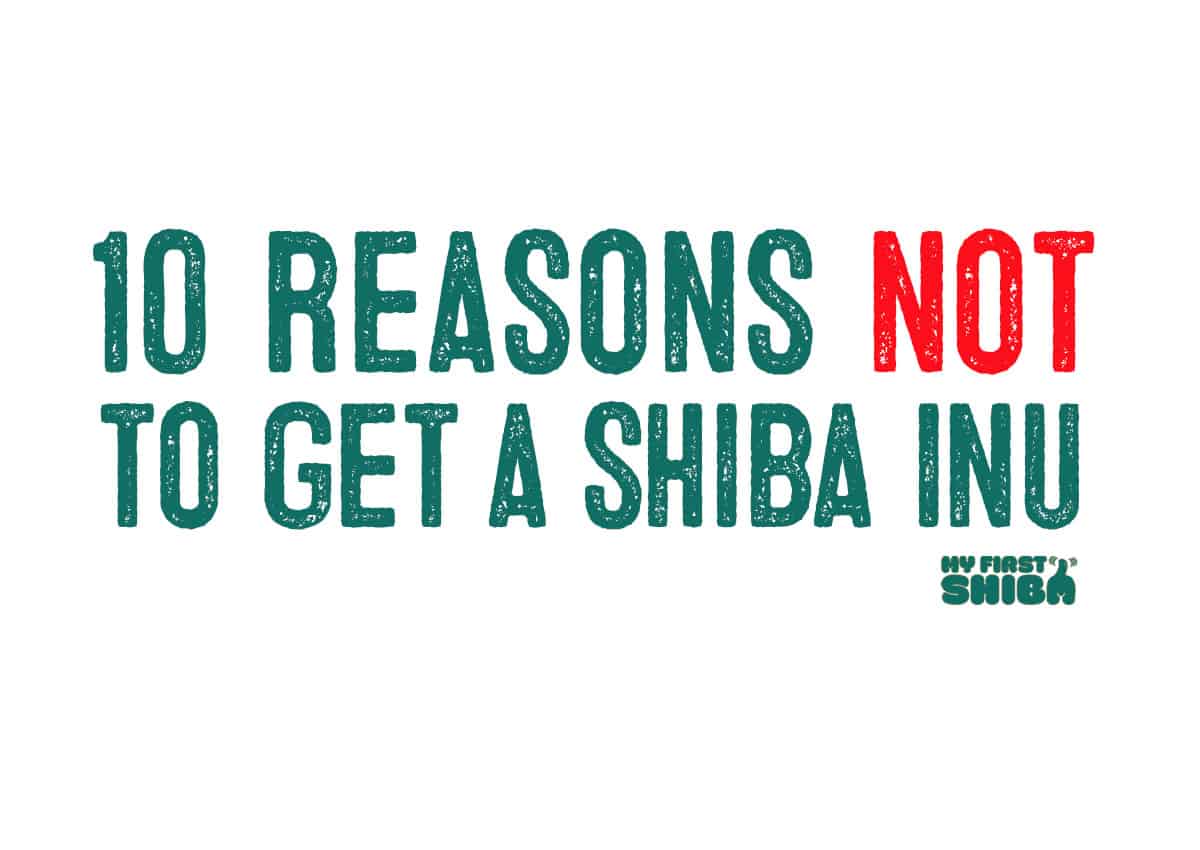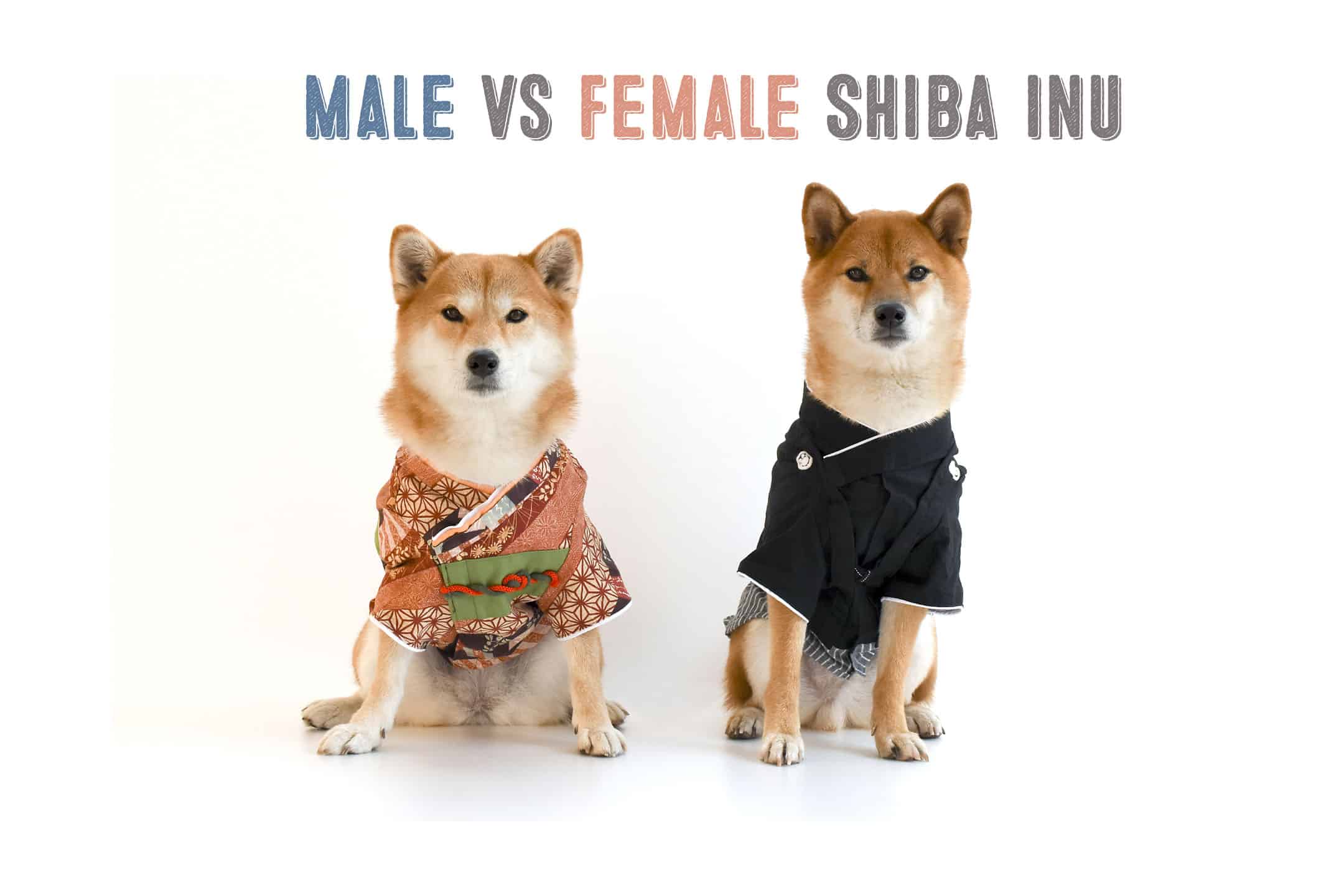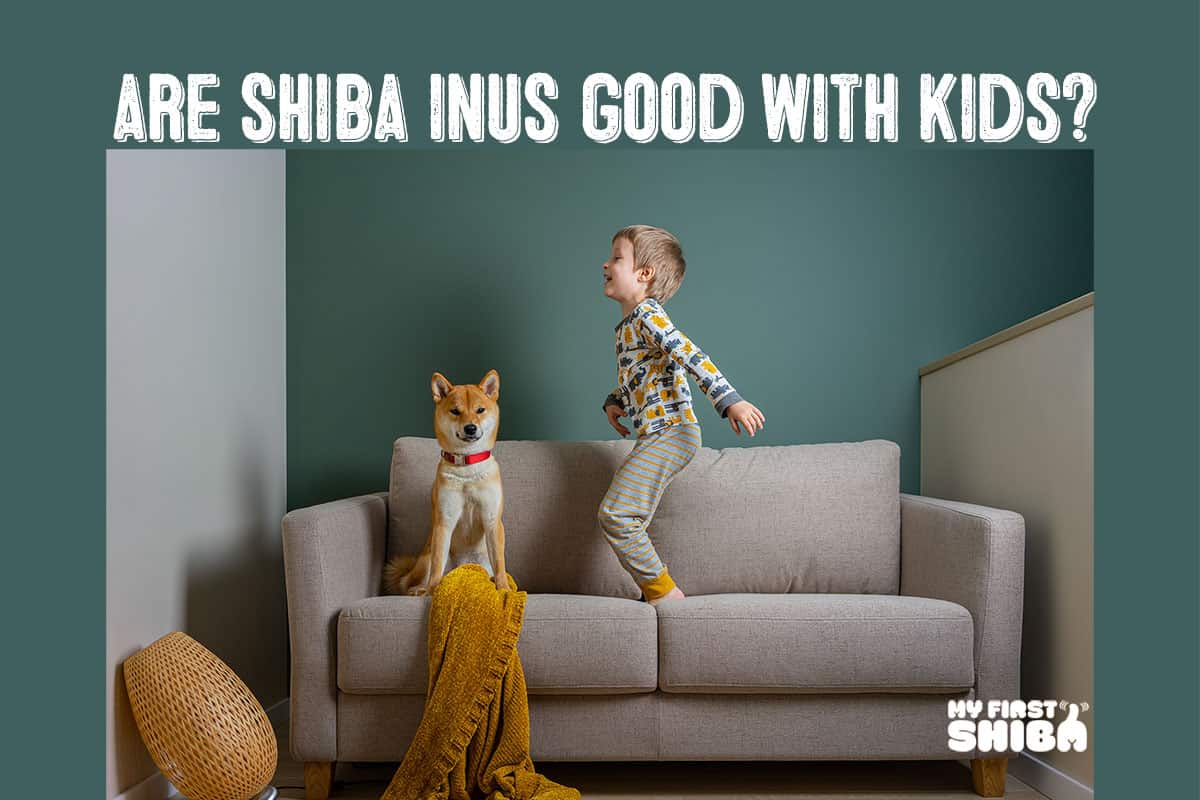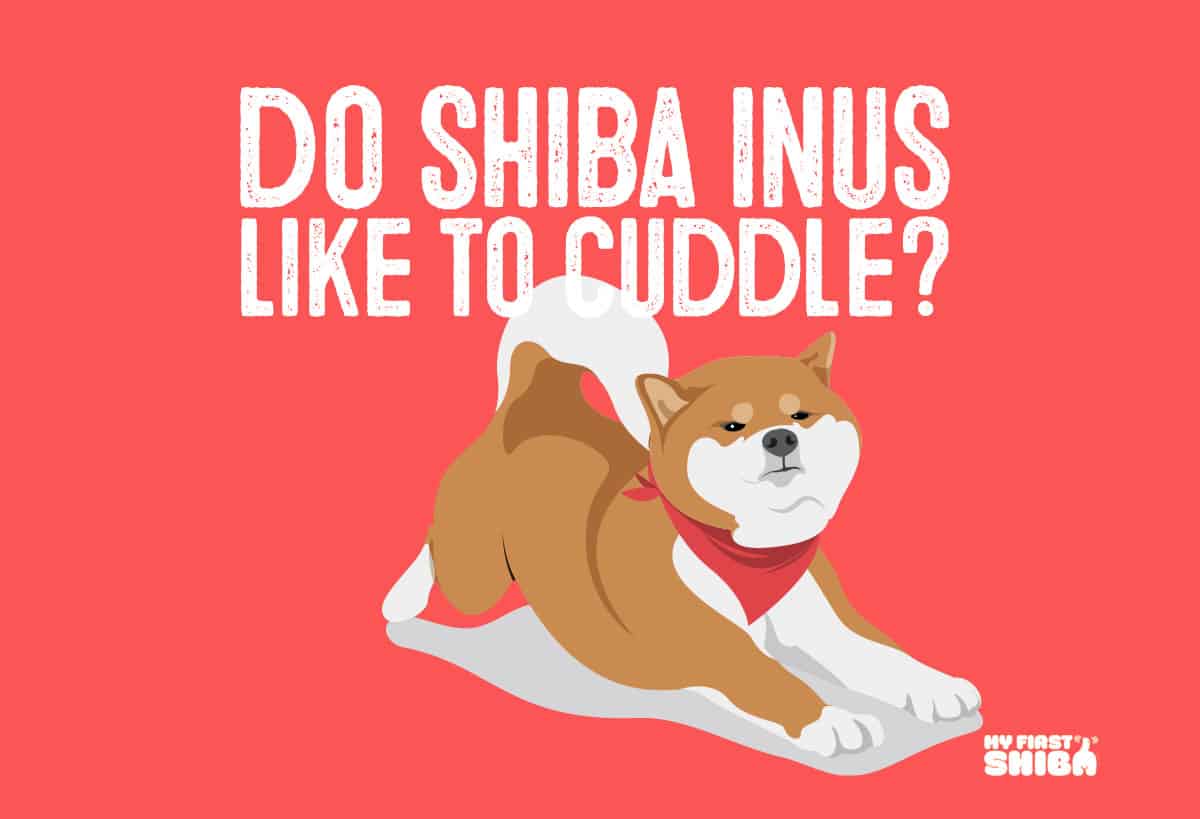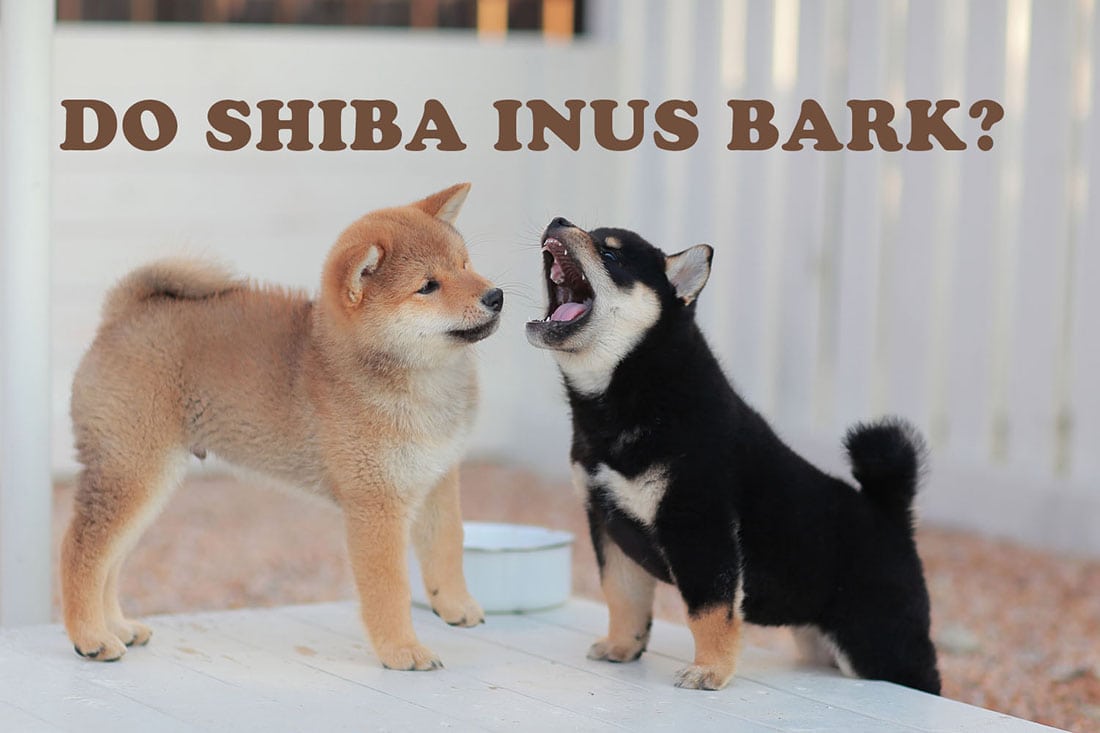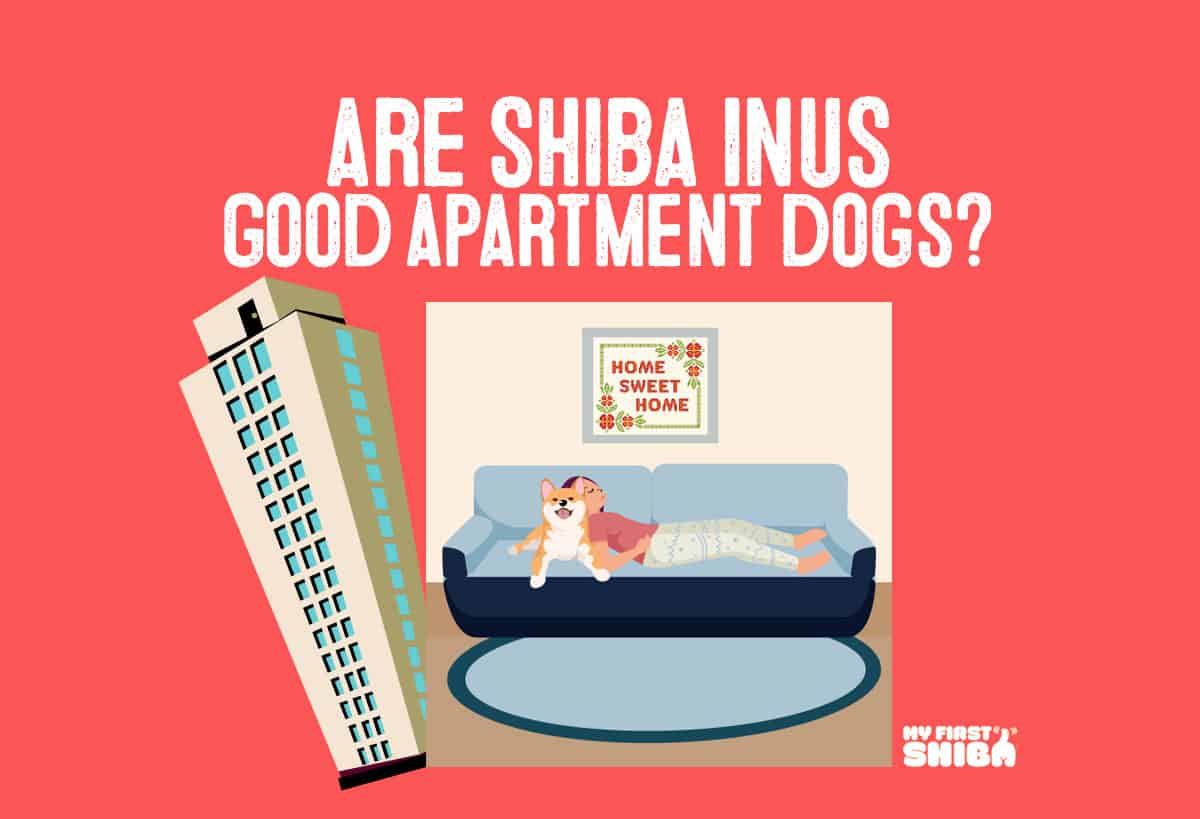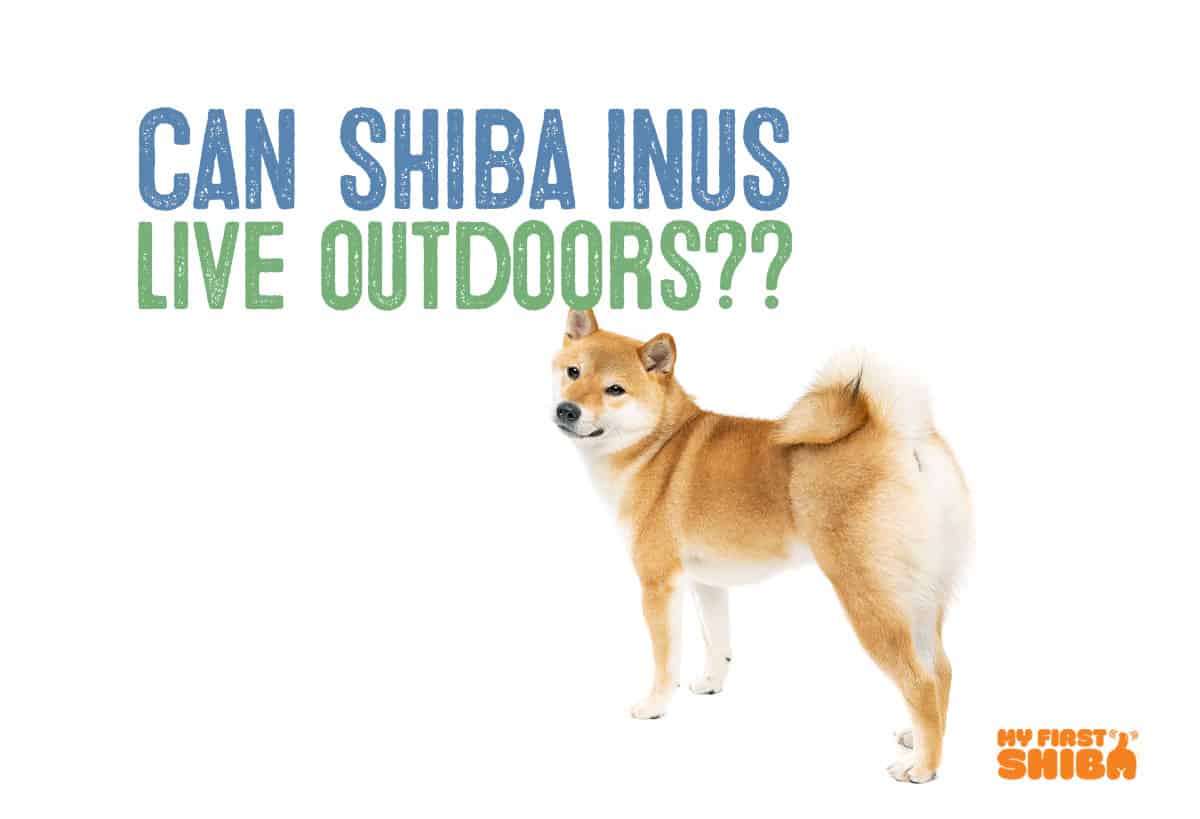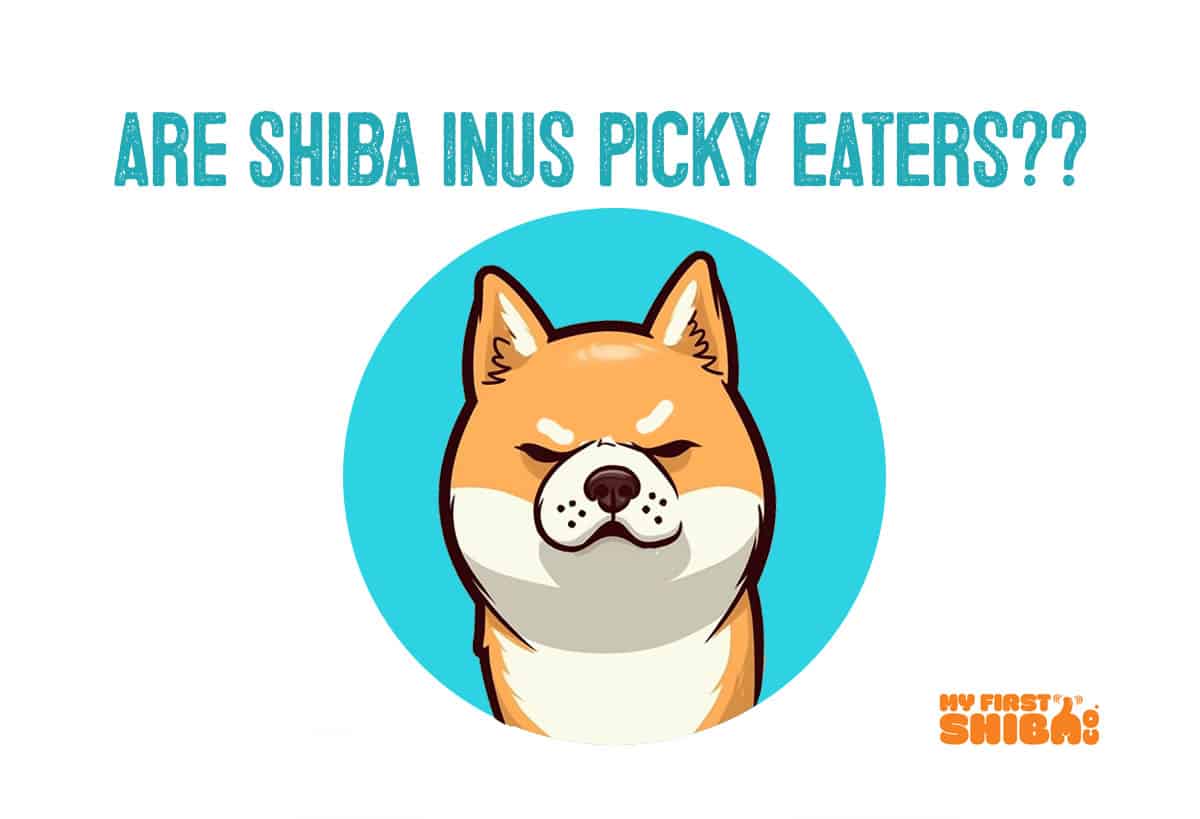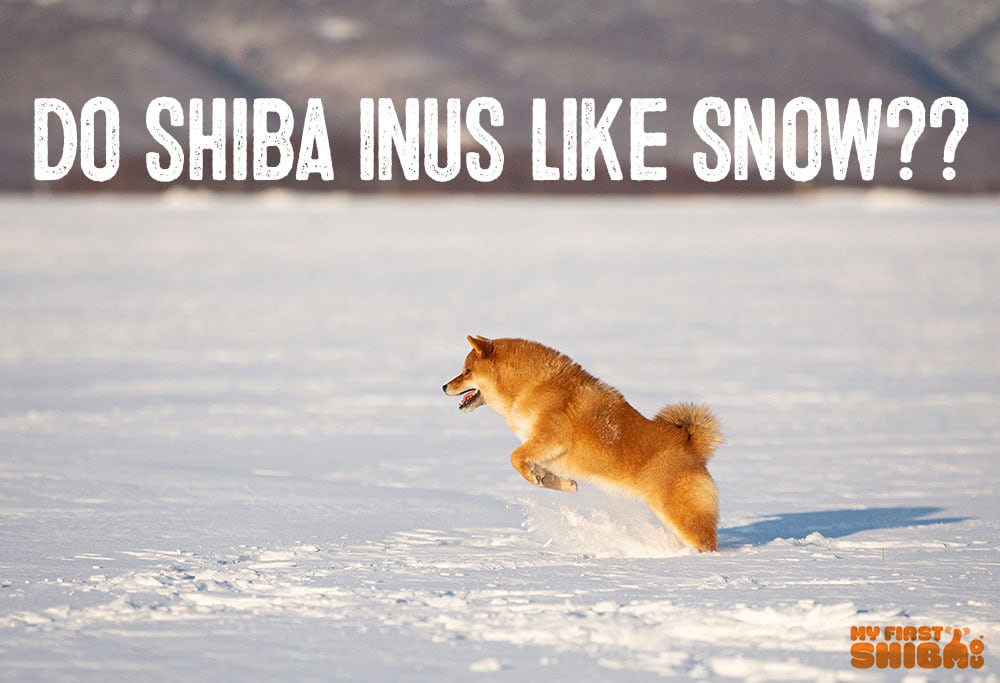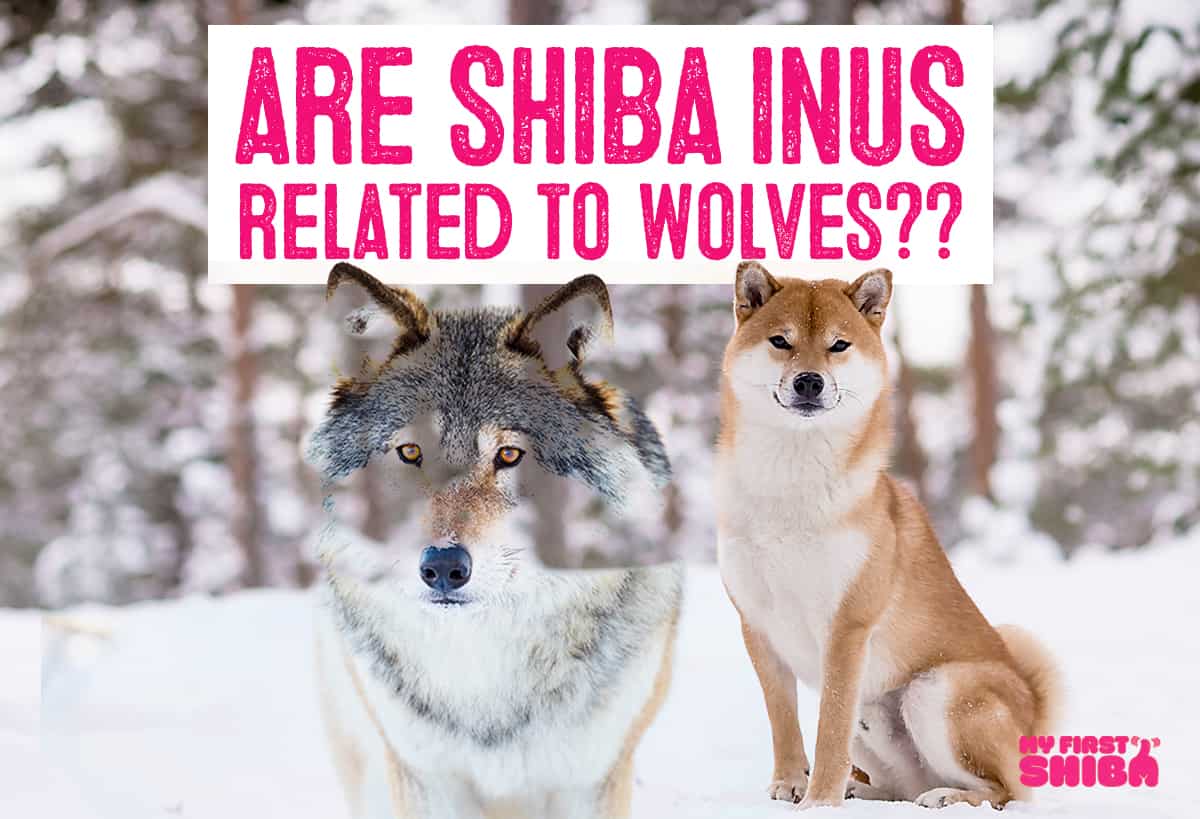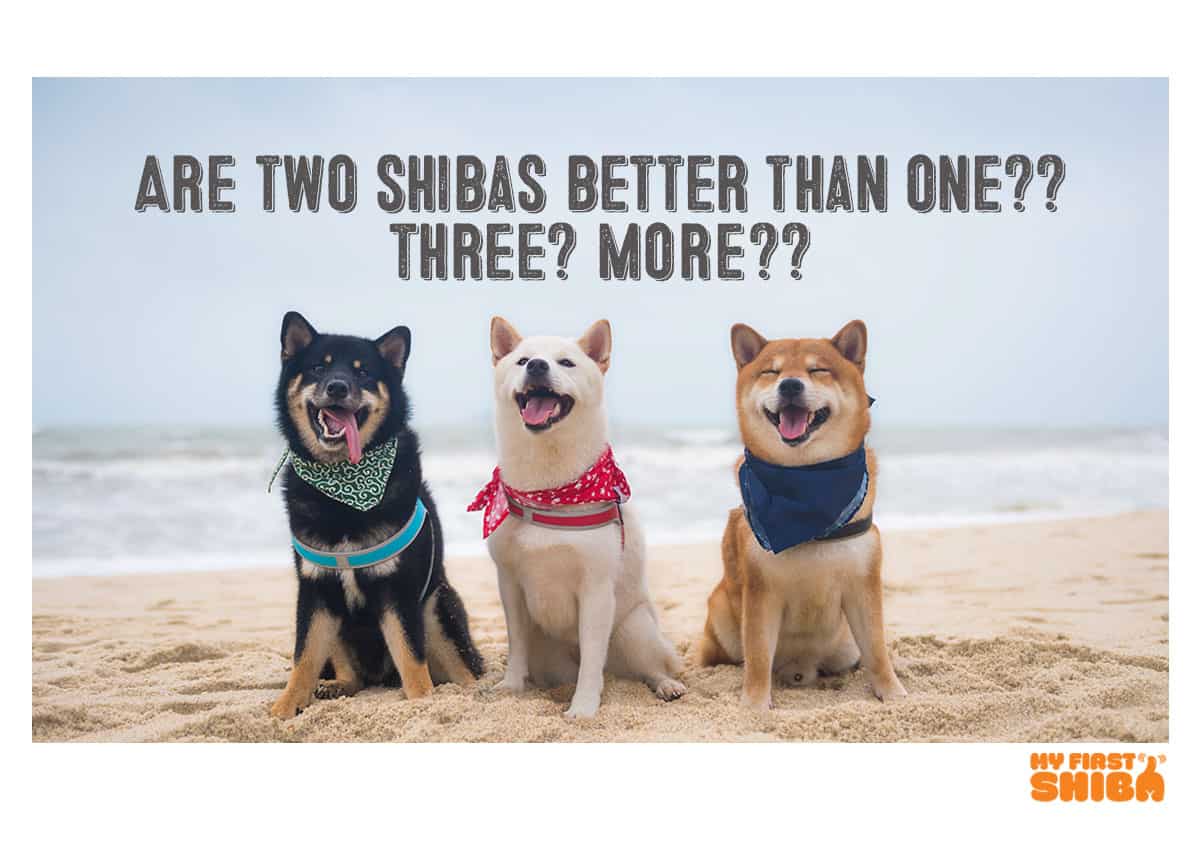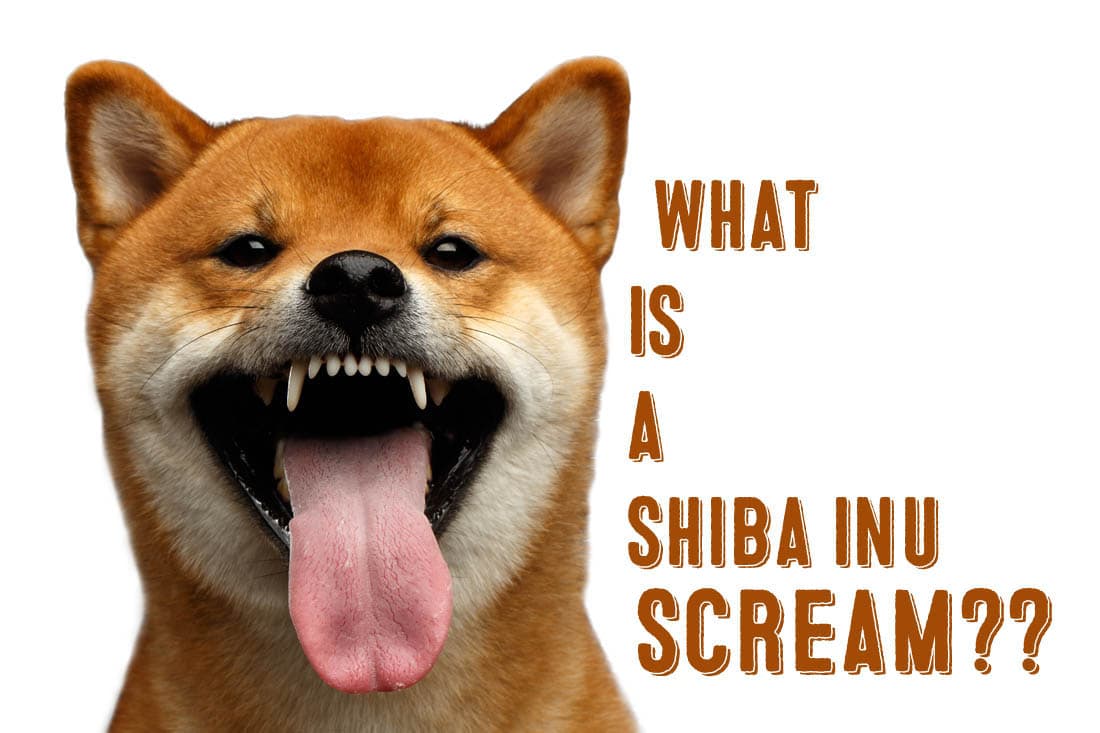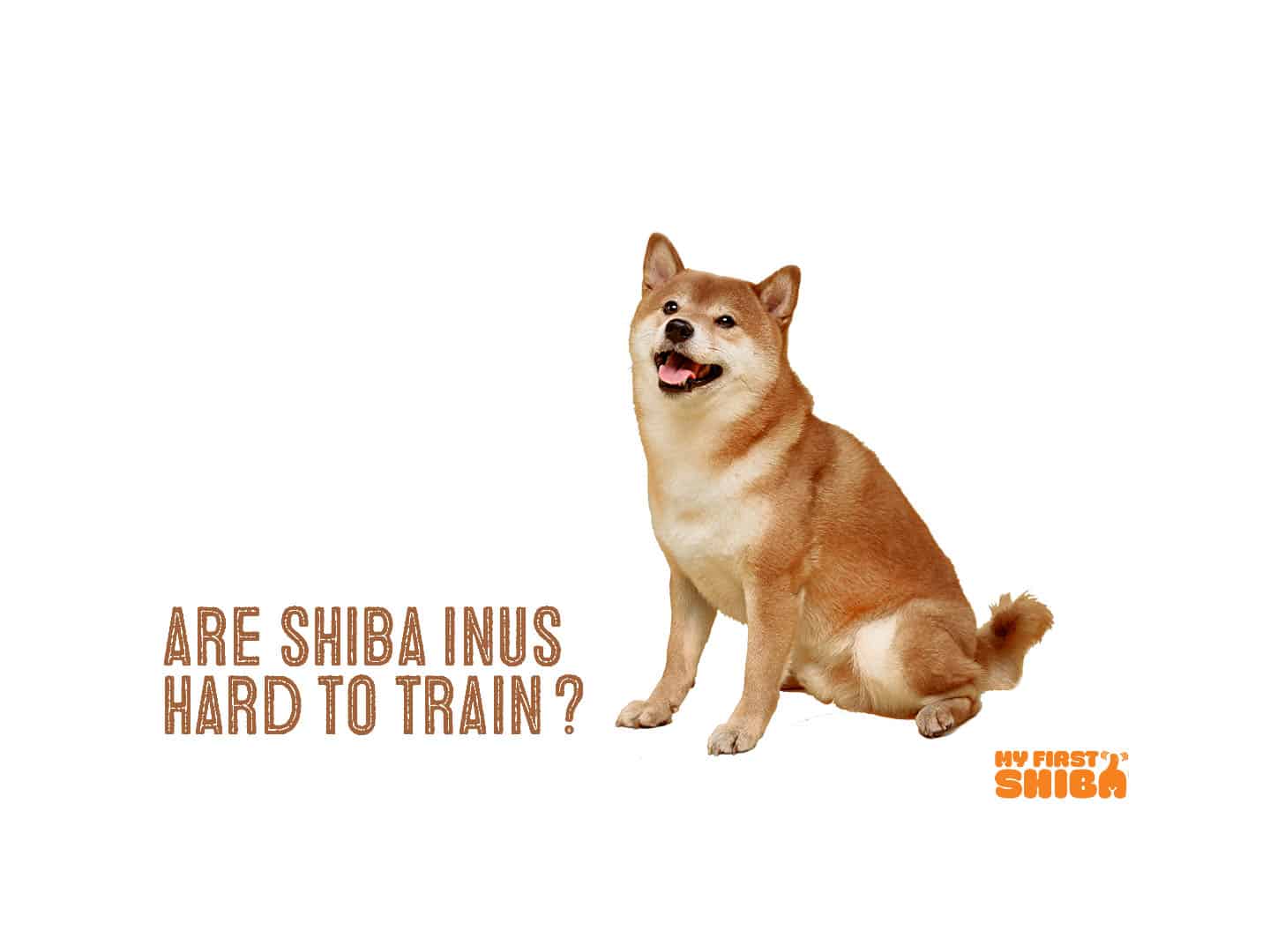On occasion, our posts contain affiliate links. However, we only recommend products that we truly believe in. For more information, visit my privacy policy page.
Phew, this website is a labor of love and largely a one-woman show so unless indicated, all articles written by J.Tsukamoto
Ah, the Shiba Inu - the dog - not the crypto coin.
With their adorable foxy-face, spirited disposition, this Japanese treasure is more than a pretty picture to share as dms.
Shiba Inus are dogs that come from a culturally-rich history that extends back hundreds, even thousands of years ago.
Despite their drop-dead gorgeous features and popularity the Shiba Inu dog breed is not the right dog for everyone.
To see if you got what it takes to be a new Shiba Inu owner, check out the rest of this comprehensive guide.
Importance of Understanding Shiba Inu Breed Standards

Understanding Shiba Inu breed standards is a critical component of preserving the health and beauty of the Shiba Inu dog.
Shiba Inus are unique in that their beauty lies in their symmetry.
Attaining perfect symmetry is deceptively difficult to even the most experienced Shiba Inu breeders.
Clean lines, balanced curves, full cheeks, almond eyes, perfect proportions.
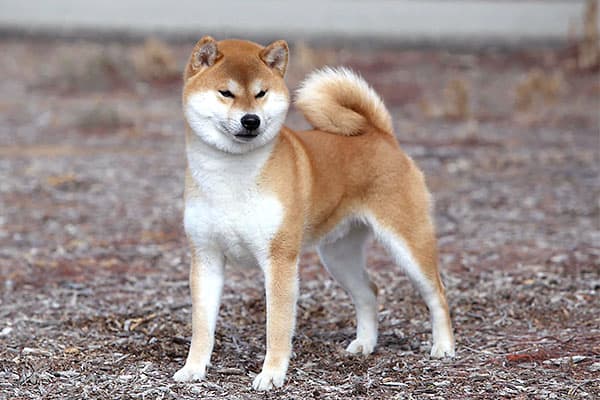
Gorgeous Shiba Inu from Nippo Hauoli Shiba Inu
These are just some of the Shiba Inu features that Shiba Inu breeders aim to preserve and improve.
Once you have a solid understanding of Shiba Inu breed standards, you’ll be well-equipped to make good decisions if you decide that a Shiba Inu is the right dog for your family.
Additionally, you’ll be able to avoid unscrupulous Shiba Inu breeders that contribute to pet overpopulation and unnecessary animal suffering.
Finding an Ethical Shiba Inu Breeder in California
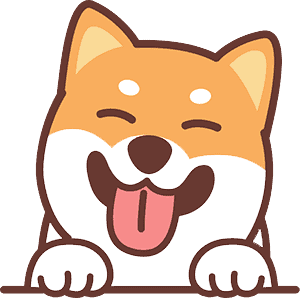
What to Expect in this Ultimate Guide of All Things Shiba Inu
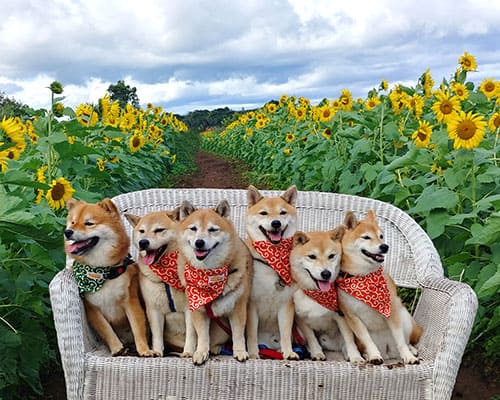
This comprehensive blueprint will teach you everything you need to learn about the Shiba Inu dog breed as well as direct you to even more in-depth knowledge on Shiba Inu topics.
From the Shiba Inu's storied history to physical attributes, temperament, health, and so much more.
And the best part is that unlike generic Shiba Inu articles written by a.i. or mass-production ghost writers - our articles are 100% human-written by Shiba Inu experts (mostly me) who know and love the breed on a deep level.
By the end of this massive Shiba Inu resource, you'll be well-equipped to decide if this one-of-a-kind breed is right for you.
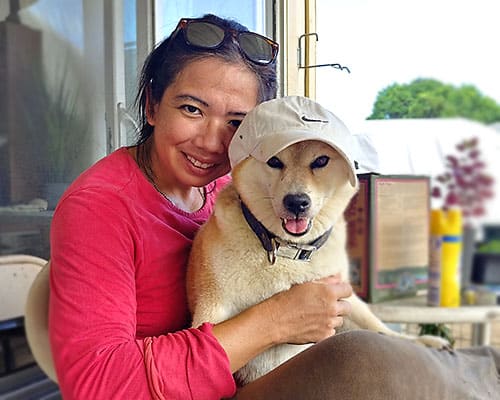
Me (Jen), and my Pal Yae
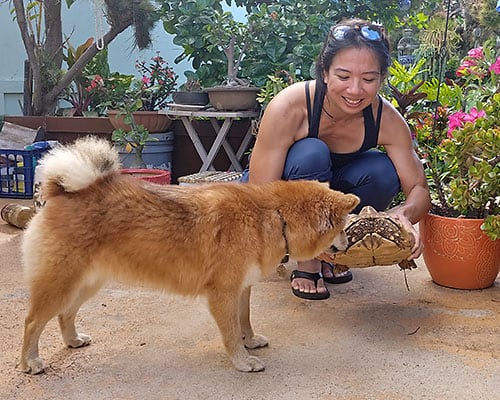
Pupper and me relocating a tortoise friend
The History of the Shiba Inu - Origins in Ancient Japan
The Shiba Inu is one of the six ancient dog breeds of Japan.
Their roots can be traced as far back as 300 B.C. during the final stages of the Jomon period.
Shiba Inus were initially bred to be small-game hunters that would flush out game like pheasants or alert hunters to the presence of targets.
Eventually due to the arrival of the agricultural age in Japan, Shibas were not needed as hunting dogs and instead became watch dogs and loyal companions.
Today’s modern Shiba Inu is the result of the breeding of three “Shiba-variant” dogs (San’in, Shinshu, and Mino) that were all descendants of the indigenous Japanese dog.
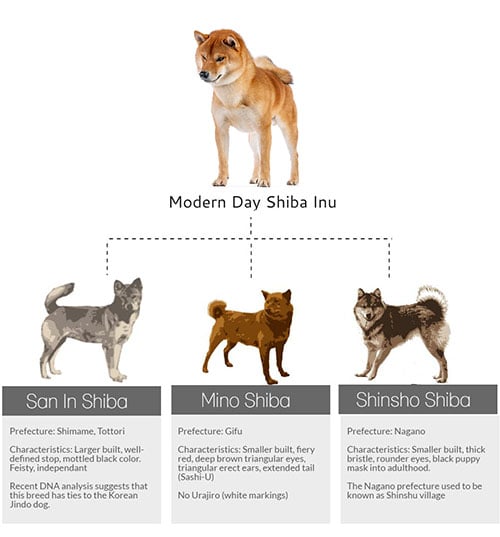
This breeding was necessary to save the Shiba Inu dog breed from extinction due to the destruction and decimation of Japanese dogs caused by World War II.
The first Shiba Inu breed standard - the Nippo Standard was officially published in 1934.
In 1936 efforts from the Association for the Preservation of the Japanese Dog, Nihon Ken Hozonkai, the Japanese government recognized the Shiba Inu as a natural monument of Japan through the Cultural Properties Act.
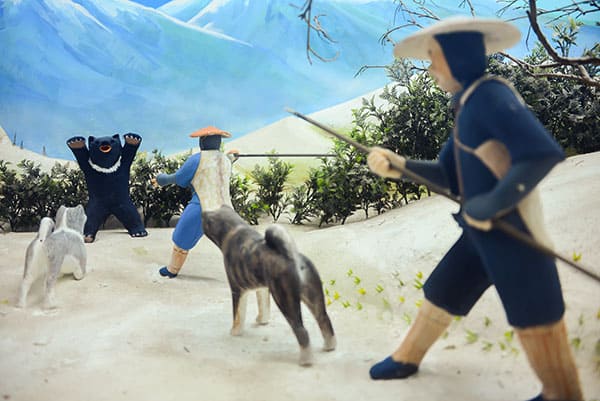
Japanese dogs
North America welcomed the first Shiba Inu in 1954 from an armed forces family traveling back from Japan. The first recorded Shiba Inu litter in the U.S. was documented in 1979.
AKC officially recognized the Shiba Inu in 1992 and designated Shibas into the non-sporting group class in 1993.
These dates highlight the fact that Shibas are relatively new to the states which can explain the difficulties of finding seasoned Shiba Inu breeders.
The Shiba's Role in Japanese Culture Yesterday and Today
In Japanese culture, the Shiba Inu holds an esteemed position and has been designated as the official dog of Japan as well as a “natural treasure” of Japan.
The people of Japan have great reverence for a Shiba due to the Shibas stoic and calm disposition - in a way, emulating the Japanese people themselves.
Today, because most Japanese live in the city in small apartments, our Shiba’s nemesis, or pal, the cat has taken over as the most popular house pet.
Yet Shibas are still adored throughout Japan and some of Instagram’s biggest pet stars come from the land of the rising sun.
Shiba Inu - Physical Appearance and Traits
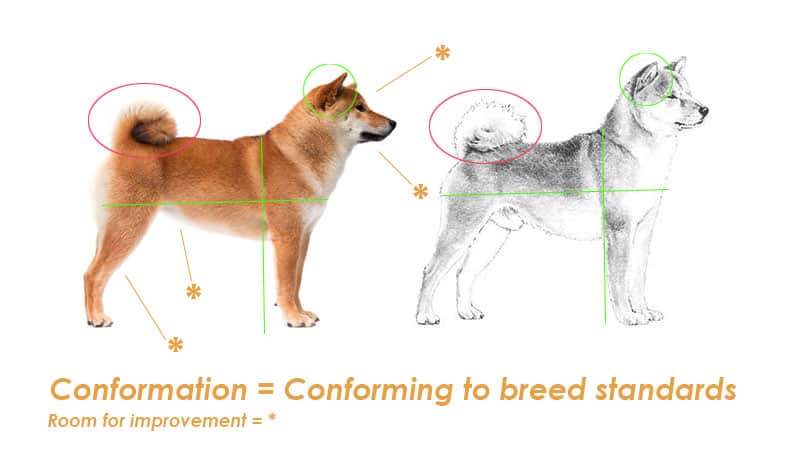
The Shiba Inu is a compact, muscular dog displaying beautiful symmetry and proportional balance.
Often described as fox or wolf-like, Shiba Inus are known for their pointy ears, chubby / full cheeks, and curly tail.
Size-wise, Shiba are not small dogs - yet not medium dogs either.
"Small-medium dogs" would typically be the right size classification for Shibas.
Though of course, smaller as well as larger versions of Shibas are common as well.
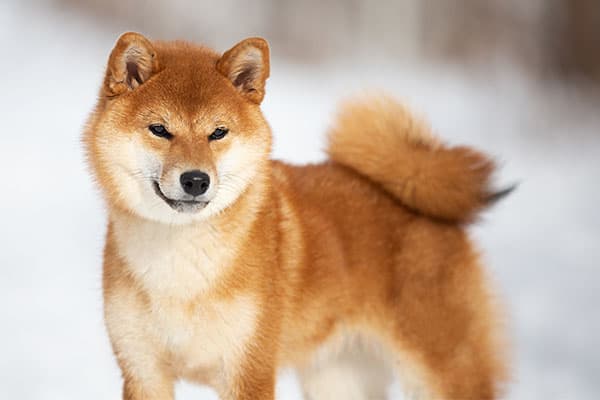
Male Shiba Inus should be between 14.5 to 16.5 inches at the withers and weigh 23 pounds - females 13.5 to 15.5 inches and 17 pounds.
Male Shiba Inus should have a height to length ratio of 10-11 while females may be slightly longer.
Bone structure should be moderate.
Shiba Inu Coats and Coat Colors
The Shiba Inu is a double-coated dog breed that sheds lightly to moderately throughout the year with two periods of more dramatic “coat-blowing” episodes that happen twice a year.
The outer coat of a Shiba Inu should be stiff and straight while the pillowy undercoat, soft and thick.
Shiba Inus with this “hard” coat is preferred over Shibas with “softer” coats because harder coats are more water-repellent and better suited for the harsh winter conditions that their ancestors endured.
The three Shiba Inu coat colors recognized by most dog associations across the globe include red, black-and-tan, and sesame.
Cream Shiba Inus are recognized by AKC but the coat color is a serious fault under various dog organizations around the world.
Red Shiba Inu
The red Shiba Inu is the most popular Shiba coat color and it’s not hard to see why.
The vibrant red outer coat contrasted with the bright white urajiro markings give red Shibas their foxy look.
Following Japanese standards, red Shiba Inus should possess a clear, bright and strong red coat. This allows good visibility and appreciation of the urajiro.
Dullness or muted red is not optimal.
Black and Tan Shiba Inu
The black and tan Shiba Inu sports an impressive jet-black coat that blends well with both cream and tan marking / points throughout their body and face.
Black and tan Shibas are known for their adorable spotted eyebrows as well as urajiro markings on their chest that sometimes look just like little bowties.
Ideally, the individual hair shafts of black and tan Shibas should be tri-colored with black, cream, and tan coloring.
This gives the black and tan Shiba Inu the rusty black look that they are known and adored for.
Sesame Shiba Inu
The sesame Shiba Inus is the most misunderstood coat color - by both Shiba Inu owners as well as fanciers and judges.
Sesame Shiba Inus are quite rare and many Shiba Inu owners often get confused between Sashige or “dirty red” Shiba Inus and sesame Shiba Inus.
Sesame Shiba Inus have a distinctive pattern and shading that runs through their entire body, from head to tail whereas dirty red Shiba Inus only have similar markings on their body and not their heads.
Sashige, "Dirty Red" Shiba Inu
The Sashige, or dirty red Shiba Inu is actually a red Shiba Inu that due to being carriers of either the black and tan or agouti gene, display their darker markings on their back.
In other breeds the term to describe this sort of shaded red coat is sable.
Sashige Shiba Inus are not uncommon though most reputable breeders rarely produce this coat.
AKC registration for a dirty red Shiba Inu is still classified as red Shiba Inu since there is no separate category for a Sashige-coated Shiba.
Other Shiba Inu Coat Colors
Purebred Shiba Inus also come in different coat colors such as cream, saddleback, and pinto.
However these coat colors do not align with proper breed standards therefore are heavily faulted and / or disqualified from being in dog shows.
Cream / White Shiba Inu
The fourth most common Shiba Inu coat color is the cream Shiba Inu which is the result of both Shiba Inu parents carrying the cream gene in their D.N.A.
Occasionally, even the best Shiba Inu breeders will produce cream Shiba Inu puppies in their litters.
These puppies would then be sent to pet-only homes and not used for showing and / or breeding.
Unfortunately the most common cause of cream Shiba puppies and other faulted colors are due to bad breeding practices and puppy mills.
Pinto Shiba Inu
Pinto Shiba Inus are not common and are caused by the “white-spot” or in Japanese, the Buchige gene.
This gene has been around for all time and is indigenous to most primitive dog breeds around the world.
This white-spot gene is not the same as the cream gene and caused by any type of outcrossing and / or mixed breeding.
Because the white-spot gene commonly causes irregular coat patterns that resemble the colorings of a holstein cow, the Japanese have deemed this unattractive and therefore purposely selected out of breeding programs since the mid-twentieth century.
Saddleback / Creeping Tan Shiba Inu

The creeping-tan Shiba Inu coat is an anomalous variation of the black and tan coat.
It’s the same type of pattern that exists in German Shepherds, Yorkies, and Airedales.
The exact genetic causes of this pattern is not fully understood yet.
Gene testing to find the RALY gene which some have theorized to cause the creeping tan pattern when present in black and tan parents is available but rarely utilized since this theory is not understood yet.

Creeping tan Shiba Inus are rarely found in reputable breeder lines and most commonly pop up from puppy mills and American BYB lines.
If a reputable breeder DOES somehow produce a creeping-tan puppy, they will not use that puppy to reproduce.
This is an important example highlighting the differences between reputable breeders and bad breeders.
The Long-Hair or "Wooly" Shiba Inu Coat
The long-haired or “wooly” Shiba Inu coat is caused by a recessive long coat gene that is present in many spitz type breeds.
This gene has been around for a very long time and many past show and stud Shiba Inus were carriers of this gene - so it’s not as rare as some people may think.
Most reputable Shiba Inu breeders do DNA tests that will prevent matings between a breeding couple that both carry the long-hair gene.
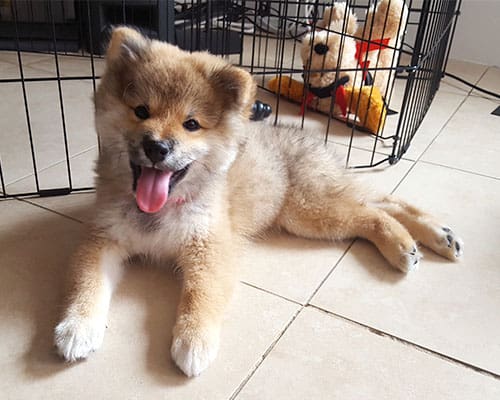
Puppah, my first long-haired or "wooly" Shiba Inu puppy
Although long-haired Shibas are undeniably cute and not affected health-wise by their coat, the far departure from breed standards mean that long-haired Shibas are never considered to be show and / or breeding quality.
Occasionally even reputable Shiba Inu breeders produce a long-haired Shiba puppy which will be offered as a pet-home puppy.
Iconic Features of the Shiba Inu:
The Iconic Shiba "Smile"
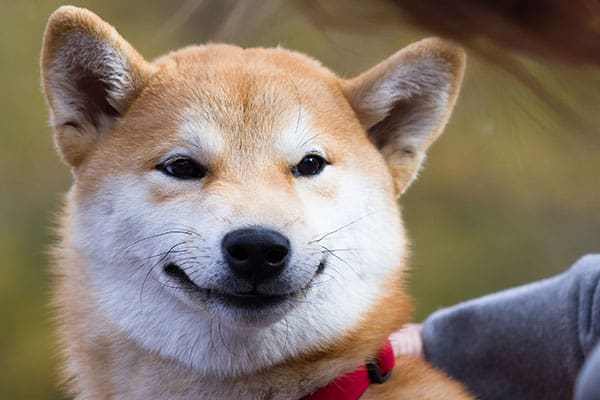
The famous "Shiba smile"—with a gentle curve of their lips that exudes pure happiness is one of the many endearing traits that makes Shibas such unique dogs.
Combined with their joyful eyes that will make even the darkest days bright, smiling Shibas are what makes the world go around.
Granted not all Shibas have those pronounced smiles you see on the Internet - but that doesn’t matter as looking at any Shiba will bring smiles to anyone's faces.
A Shiba Inu's Tail - More Than Just a Cute Curl
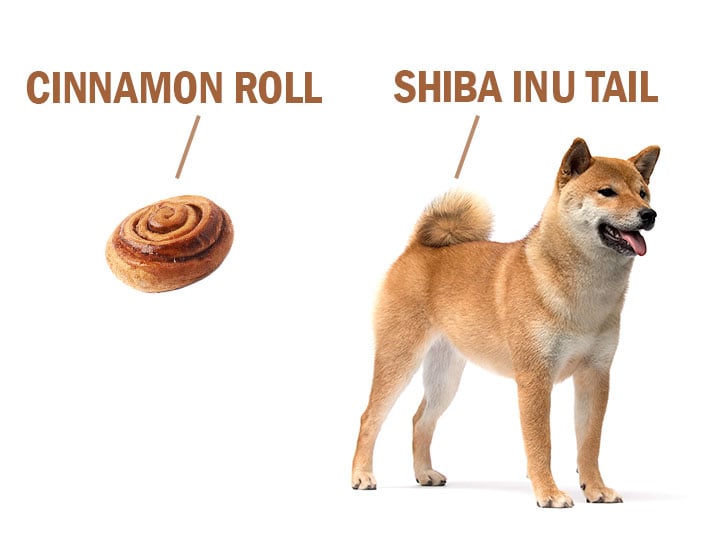
The Shiba Inu's tail either curled or sickle-shaped, serves as not only an aesthetic splendor but also a barometer of its emotional state.
High, erect tails signify confidence and contentment while lowered tails indicate displeasure that should be remedied a.s.a.p!
Per Shiba Inu breed standards the preferred tail is the single-curl of “sickle” tail.
Double-curled tails or tails that don’t stand up are faulted in the show ring.
I have a long-haired Shiba Inu that I periodically trim the outer hairs to keep things neat. I love shaping his tail into a ball.
I call it the “Tina-Turner shag ball” - and it’s so adorable!
Those Adorable "Airplane" Ears - Jet-setting to Your Heart
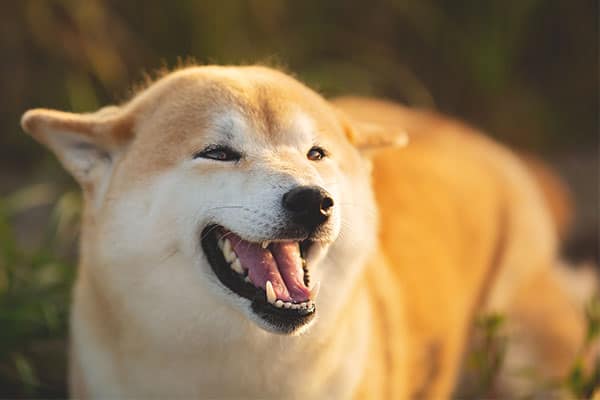
Isn't a Shiba Inu's smile and "airplane ears" the BEST THING EVER!?
The erect and pointy ears of Shiba Inus are one of its trademark features. It gives them that alert and attentionate look that Shiba admirers adore.
Certain Shiba Inus display "airplane" ears when they are happy and it's the cutest thing!
Plus, these airplaned ears are often accompanied with the iconic Shiba smile.
According to many Shiba Inu breeders, getting nice Shiba Inu ears in breeding is quite difficult as size, proportion, shape and ear culation all need to mesh.
Don't let those cute, perky ears fool you; they're a highly-evolved listening apparatus that's always tuned to what’s going on and how you’re feeling.
While all dogs are perceptive, Shiba Inus seem to exhibit exceptional perception and sensitivity.
Shiba Inus can express various emotions through their ears with lowered ears signaling either worry or happiness.
Shiba Inu Temperament

The official Japanese standard provided by Nippo states that Shiba Inus are bold and spirited dogs with unaffected bluntness combined with a good nature that is both reserved and aloof.
Now this might sound a bit contradictory for most but in reality the complexities that make a Shiba a Shiba is one of the reasons many fall for this one-of-a-kind breed.
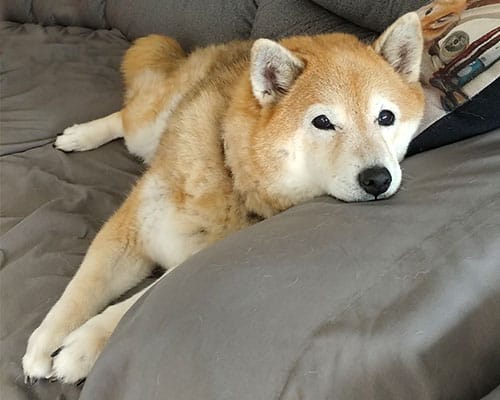
Overall in my view, most Shiba Inus are proud and perceptive dogs with an innate sensitivity to their surroundings and their people.
Yes, most Shiba Inus may seem aloof and reserved but in actuality they’re simply dogs that don’t get excited about everyone and every little thing - they concentrate on the big picture and what’s in it for them as well as their family.
Shiba Inus are special dogs because they are simply at one with nature, with life and
Because Shiba Inus are in a way “ancient” dogs closely related to the gray wolf - touches of primitiveness can be found in many Shiba Inu breeding lines - especially those directly from Japan.
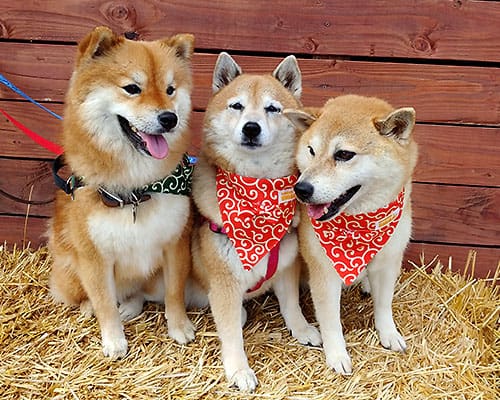
This primitiveness can manifest in various forms such as increased aggression, stubbornness, and tendency to want to escape.
However skilled Shiba Inu breeders are adept at breeding the negative consequences of this primitivity out of their breeding lines - basically they breed for standards as well as “temperament”.
Shiba Inu Dogs From Inexperienced Breeders and / or “Puppy Mills”
Shiba Inu puppies from puppy mills and inexperienced breeders are typically the Shibas that have temperament issues such as aggression, fearfulness, and anxiety.
Combine that with the fact that Shiba Inus are already a more “primitive” breed often spells trouble for inexperienced dog owners.
This is why it’s critical to understand the importance of finding Shiba Inu breeders that are knowledgeable, ethical, and breed for both health and temperament.
Shiba Inu Health 101
Shiba Inus enjoy relatively good health overall. Shiba Inus are sturdy, agile, and resilient dogs that can handle the demands of outdoor life as well as adapt to the comforts of indoor living.
A Shibas well-balanced and proportionate body protects them from injuries caused due to structural imbalances.
In other words, a well-bred Shiba Inu is a dog that has a body designed to thrive.
To keep your Shiba happy and healthy, provide a balanced diet that is as fresh as possible.
It’s common sense to know that providing solely highly processed and preserved kibble for a dog’s life is not the best choice.
We can do better and our Shibas deserve it.
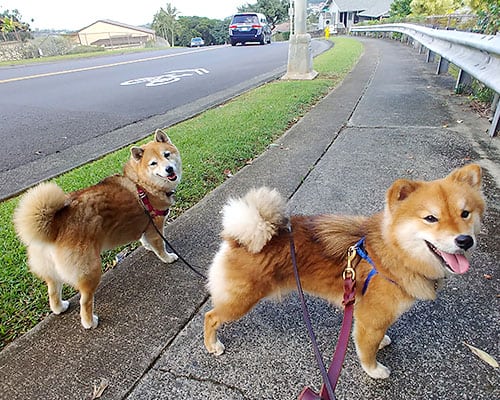
Shibas should get enough exercise to complement their age and body condition - preferably in nature whenever possible. Most Shibas love hiking with all the scents and sensory information provided.
Routine veterinarian visits are important as well as core vaccines.
However be wary of veterinarians that recommend core vaccines every year as certain core vaccines are safe to administer every three years.
Be sure to research and do your best to not “over vaccinate”.
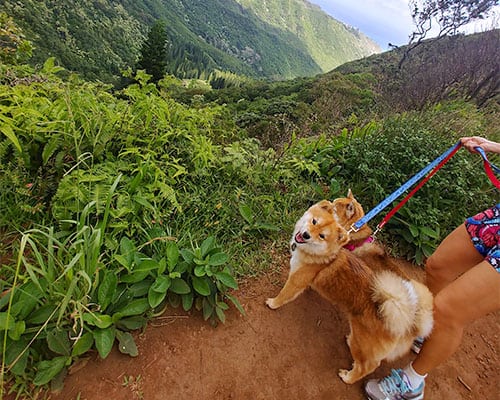
Fleas, ticks, and heartworms are issues that dog parents must deal with appropriately. The medications to prevent these nuisances are basically pesticides.
And certain pesticides on the market have been known to cause serious health problems in dogs such as seizures.
Be sure to research what type of products you plan to give your Shiba carefully.
Also ask your veterinarian about the necessary frequency of administration.
Titer tests are available to check your dog's level of antibodies and are a great way to find out if your dog needs a boost.
My veterinarian is fine with me giving flea, tick, and heartworm medication three or four times a year versus once every single month.
And for many decades all of my canines have been fine with that. (fleas and ticks controlled - no heartworm cases).
Shiba Inu Diet and Nutrition
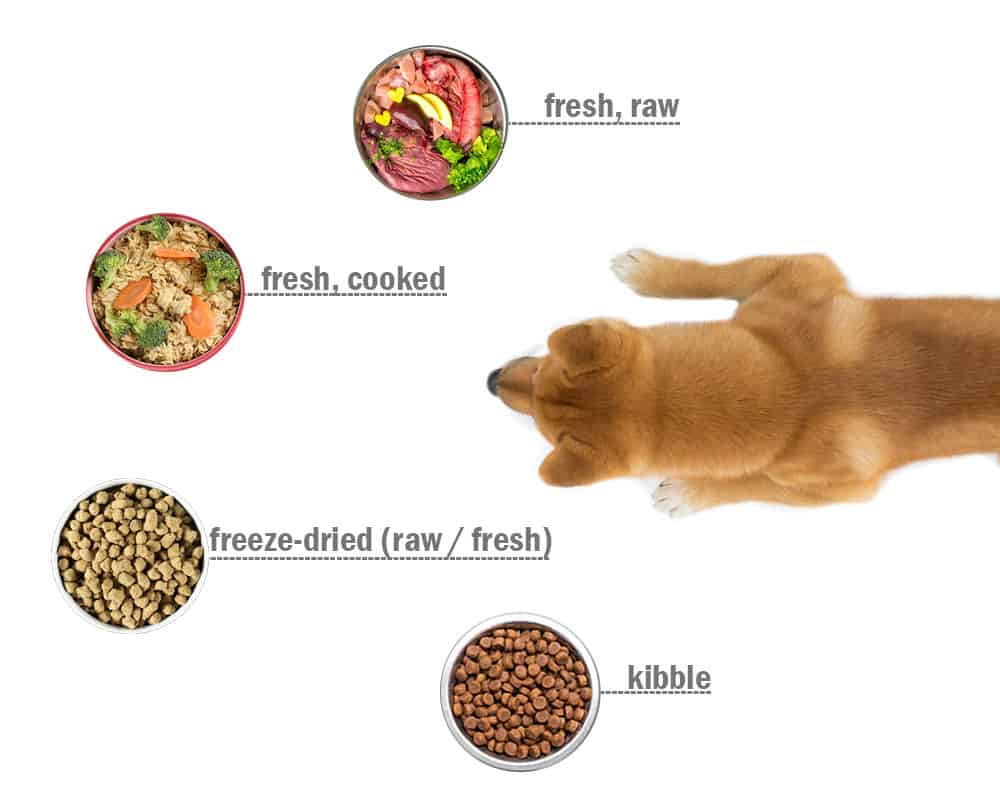
Choosing the right food is paramount for a Shiba Inu's health.
If you think about it, it’s the one thing you can control that can make a positive impact on your Shibas quality of life as well as health.
So this is why you should feed your Shiba the freshest and best quality food you can afford.
And to do so you must take steps to educate yourself on how to provide your Shiba with quality nutrition without getting caught up in all of the dogma laid down by high-powered marketing executives of commercial dog food “mega” brands.
You are responsible for being the best advocate you can be for your Shiba so taking the time to learn a few principles on canine nutrition can go a long way.
The Importance of Nutritional Balance For Your Shiba's Health
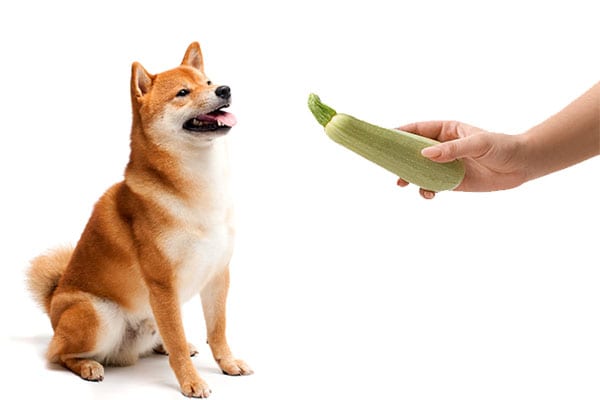
The most important thing about any dog’s diet is nutritional balance.
Dogs require specific minimum amounts of various vitamins and minerals to maintain health and vitality.
If nutritional balance is off, it doesn’t matter what type of food it is (fresh, raw, kibble, freeze-dried, etc) because unbalanced food lacking the correct amounts of vitamins and minerals is a serious danger to your dog's health.
Unfortunately this is one of the many reasons most veterinarians don’t recommend “homemade” fresh feeding because so many dog owners fail to understand canine nutritional balance.
You can’t just cook some chicken, veggies, and potato together and consider that a healthy meal for you pup.
As an occasional treat - sure.
But if you were to feed your dog that same type of food every day, your dog will be highly susceptible to serious illness.
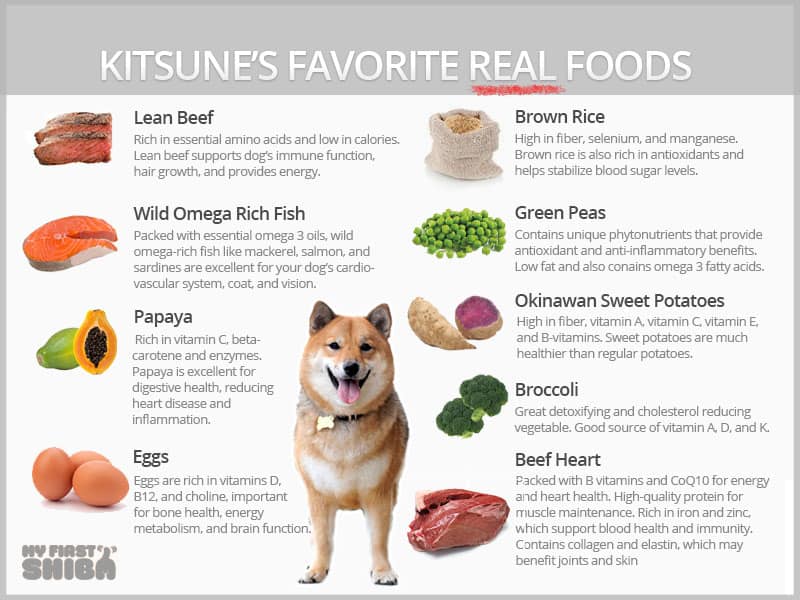
Sadly, there are literally tons of recipe blogs and sites that offer “complete” dog food recipes that are 9 times out of 10 nowhere near meeting nutritional requirements.
So in these cases, even ultra processed and preserved “kibble” is better than an unbalanced fresh meal.
My advice is keep it simple by following this mantra, balanced first, then the fresher the better.
This translates to balanced, organic fresh homemade food, lightly cooked as my first choice in feeding your Shiba Inu.
What About Feeding My Shiba Inu Raw?
Feeding raw is also an option but is not the right choice for ALL Shibas.
Older Shibas would not do well on raw compared to lightly cooked due to the fact that raw feeding requires more effort on a dog to get enough nutrition and energy compared to cooked foods.
Be wary of entities that proclaim that raw feeding is the best method to feed a dog. Because all dogs are different and no, they really don’t need to have the same diet as wolves.
Modern canines have long evolved from their dancing with wolves stage - and so has their digestive tract and their ability to properly digest carbohydrates.
Shiba Inu Bathing and Grooming
Shiba Inus possess a double coat: a soft, dense undercoat and a straight, stiff outer coat. This combination provides them with insulation against both cold and heat.
Twice a year, typically during spring and fall, they'll "blow" or shed their undercoat, which can make it seem like your house is being taken over by Shiba fluff
However, year-around shedding is not that bad and can be easily managed with occasional brushing, preferably with a slicker type brush.
A Shiba Inus coat is more or less water resistant, unless the Shiba has a “softer” coat.
This means that their coat can wick off dirt and grime a tad better than non water-resistant coats resulting in a reduced need for bathing.
But be reasonable. If your Shiba is dirty - wash her! Don’t fall for the myth that bathing a Shiba too much is bad for their coats.
That was a myth perpetuated decades ago when shampoos - especially for pets - were made out of low-quality and caustic ingredients.
Additionally, certain Shiba Inus with skin allergies may require more frequent bathing to keep their allergy symptoms under control.
Shiba Inu Nail Care
To prevent long nails that can be detrimental to your Shibas gait and health - aim to clip their nails at least every two weeks.
If your Shiba already has long nails, you’ll want to increase the frequency to shorten their quick.
You may have heard horror stories about Shiba Inus screaming when going through certain grooming procedures - and that can definitely happen if not properly socialized to those things early in life.
Thankfully, in most causes (but not all - some Shibas may bite) Shibas are more “bork” than bite - yet hearing their agony is disconcerting to say the least.
To avoid this happening, ensure that you socialize your Shiba Inu puppy to all types of grooming procedures in a patient and positive environment.
If your Shiba Inu is already an adult then you’ll need to incorporate desensitization with positive reinforcement to gradually get your Shiba to accept grooming and handling.
Depending on the Shiba and your ability / comfort with the task at hand you may want to work with an experienced behaviorist.
And since grooming will be an ongoing task for the rest of your Shibas life, it’s better to get this done as soon as possible.
What is the correct angle to trim my Shibas nail?
Cutting your Shiba's nail at the proper angle will ensure that their quick recedes and / or stays at the correct length. This angle will also make it less likely that you accidentally cut into the quick.
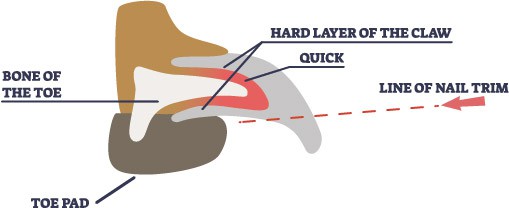
Training Your Shiba Inu
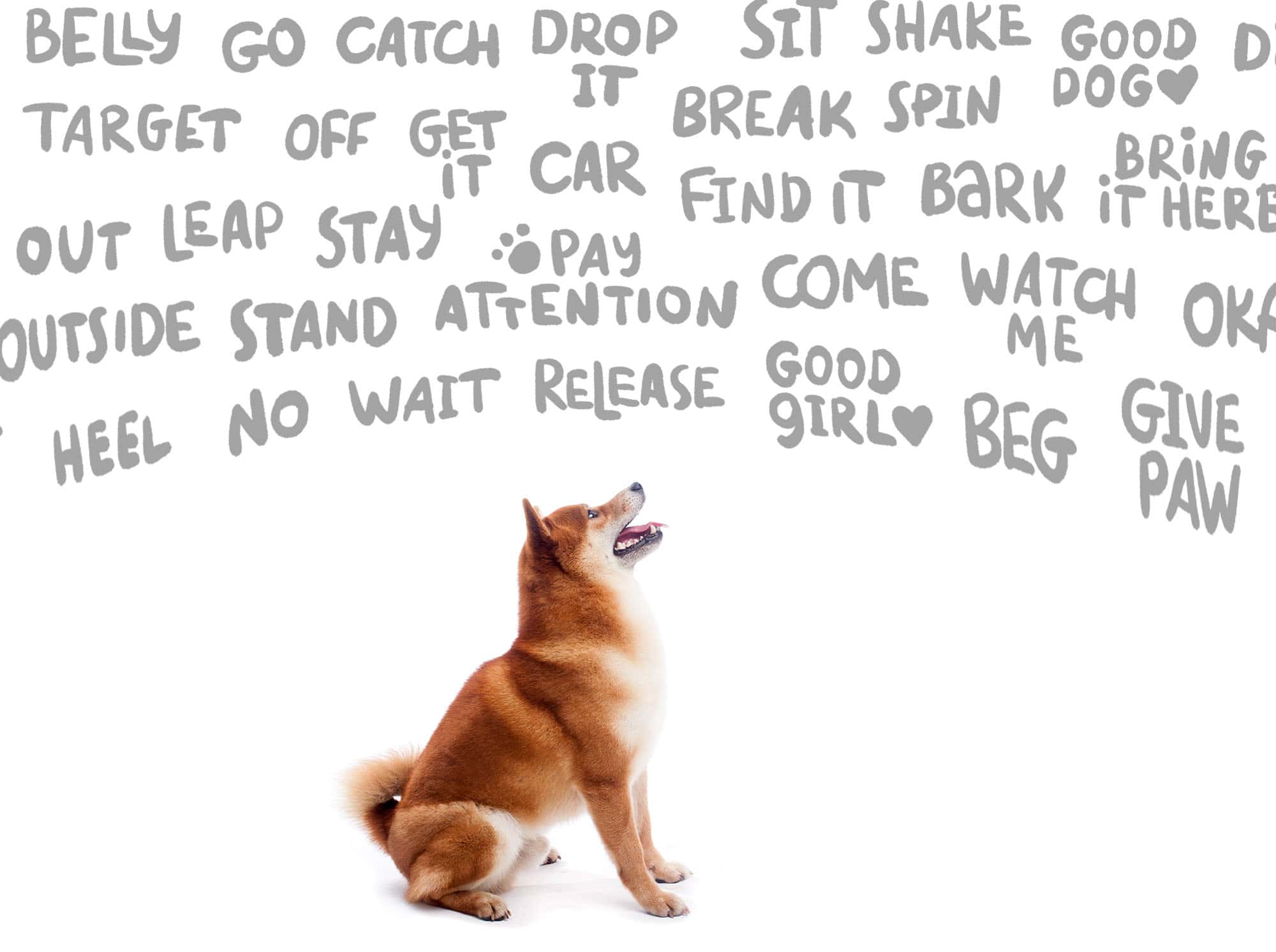
There are several different types of training modalities that will be involved in your Shiba Inu’s life and you’ll likely notice that your Shiba will excel at some of them better than others.
Shiba Inus are naturally smart but sometimes willful dogs.
Unlike some dogs that love to do anything to appease their owners, Shiba Inus take on more of a “what’s in it for me” type of stance.
This means that extra effort, rewards, and patience may be needed for most common training disciplines such as obedience, recall, and leash training.
On the other hand because Shiba Inus are clean and fastidious dogs, potty training them - when done correctly - is usually a breeze.
Dog training can be broadly categorized into various types, each with its unique objectives and methodologies.
Here’s an overview of the different kinds of dog training that will likely be incorporated into your Shibas life at one time or another.
1. Shiba Inu Obedience Training
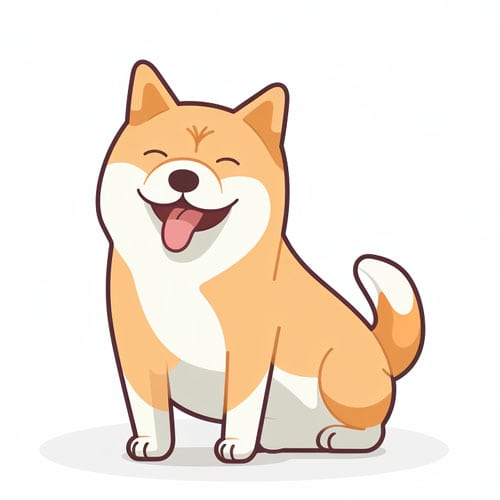
Purpose: Teaches dogs basic commands like ‘sit’, ‘stay’, ‘come’, and ‘leave it’.
Methods: Often involves the use of commands, gestures, and rewards.
Benefits: Helps in managing the dog, ensuring it behaves well with others as well as staying safe in different environments.
Shiba Inus can excel at obedience training if done during early puppyhood.
The task gets a bit harder the older and more set in their ways a Shiba gets. Shiba Inus are food-motivated so use food as well as positive reinforcement during obedience training.
One of the most important obedience commands all Shibas should master is the “stay” command.
For Shiba Inus, who are known to be “escape / bolt” risk - obeying the stay command can oftentimes save their lives in unpredictable situations.
2. Shiba Inu Behavioral Training
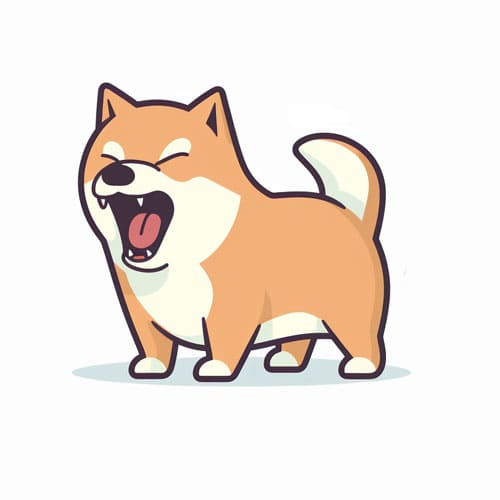
Purpose: Addresses behavioral issues such as chewing, barking, and aggression.
Methods: Involves understanding the cause of behavior and using various techniques such as positive reinforcement and desensitization training to modify it.
Benefits: Creates a healthy and happy living environment and ensures the dog’s behavior is socially acceptable.
Shiba Inu bred by reputable and skilled breeders are better equipped to learn the ins and outs of what behaviors are acceptable and what behaviors are not.
Shiba Inus that come from bad breeding situations often have various behavior issues (aggression, anxiety - especially separation anxiety) that must be remedied.
And many of these cases may require expert help from canine behaviorists.
However even Shiba Inus bred from good breeding environments still need behavior training done at an early age, particularly during the critical period of puppy learning.
3. Shiba Inu Socialization Training
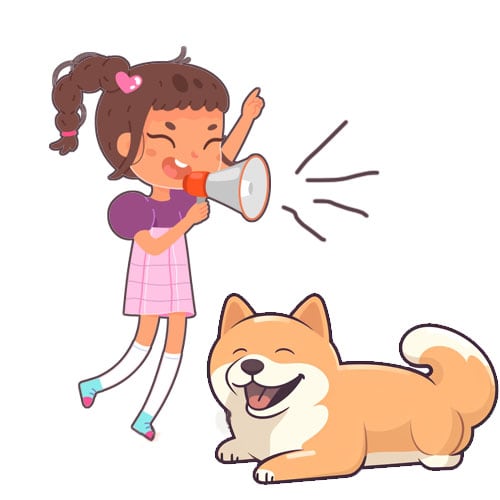
Purpose: Exposes the dog to various people, animals, noises, and environments to make them well-adjusted.
Methods: Involves exposing your Shiba to various environments and situations with careful supervision and positive reinforcement
Benefits: Helps Shibas to become more adaptable and less fearful of new experiences - translation - less Shiba screams!
The key with socialization training for all dogs is starting early, ideally starting as early as eight weeks. Shiba Inus are known to be noise-sensitive so introducing common noisy life things such as vacuums is important.
Successful socialization requires you to be attuned to your Shibas moods and comfort levels. It’s best to perform socialization when your puppy is in a happy and confident move.
Some things must be introduced slower than others. You never want to surpass your pup’s comfort level which may in turn backtrack all of your socialization efforts.
Positive reinforcement and yummy treats are used during socialization training so be sure to have the right type and size of training treats for the best training outcomes.
4. Shiba Inu Potty Training
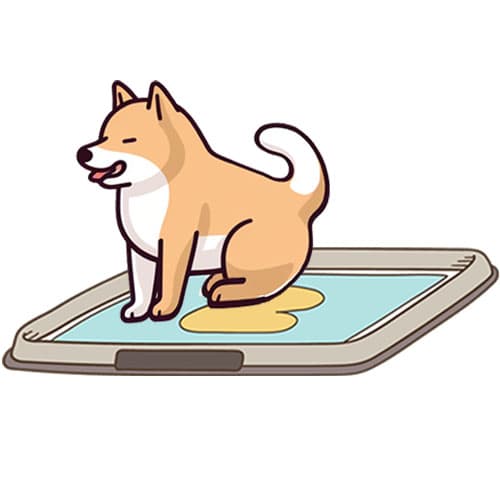
Purpose: Teaching a Shiba Inu to relieve himself at specific places and timeframes.
Methods: Consistency, management / supervision, and rewarding your Shiba when it goes potty in the desired location.
Benefits: Keeps the home clean and sanitary while establishing important routines.
Potty training is where most Shibas shine!
Shiba Inus possess an innate instinct to prefer keeping their living environments separate from their potty environments.
This is why many Shiba Inu owners notice potty training their Shibas was a breeze compared to other dog breeds.
However early and consistent potty training must be done with all Shiba Inu puppies.
One of the most importanting potty training aspects is “management” which requires close and almost constant supervision of the puppy during the early days of training.
5. Shiba Inu Leash Training
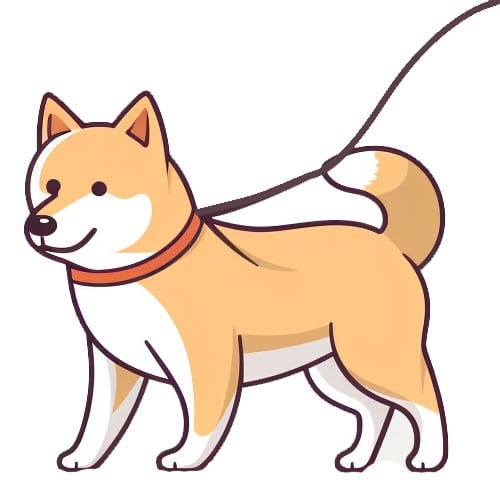
Purpose: Teaches your Shiba to walk well on a leash and harness without pulling or struggling.
Methods: Uses reward-based techniques to encourage good leash behavior.
Benefits: Essential for safety during walks, and promotes good walking manners.
Teaching your Shiba how to walk correctly on a leash is an important task to get accomplished as soon as possible.
Pulling and bolting Shiba are no fun and can be an escape risk.
Many dogs don’t like the feel of harnesses when they first wear them.
Introducing a soft and comfortable harness when your Shiba is a puppy with positive reinforcement is the most efficient method.
If your Shiba is already an adult, more patience and positive reinforcements will be necessary.
6. Shiba Inu Agility Training
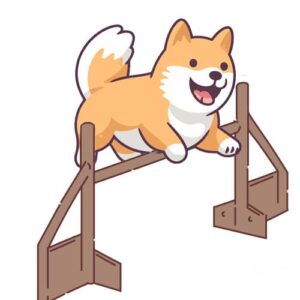
Purpose: For sports and competition, improves a Shiba’s agility, navigation, and obedience skills.
Methods: Uses obstacle courses, timed exercises, and various commands.
Benefits: Provides both mental and physical stimulation, enhances the dog’s skills.
Just because a Shiba Inu is not in a “sporting” group classification doesn’t mean that they won’t like activities such as Shiba Inu Agility Tips and Tricks barn hunting, and scent work.
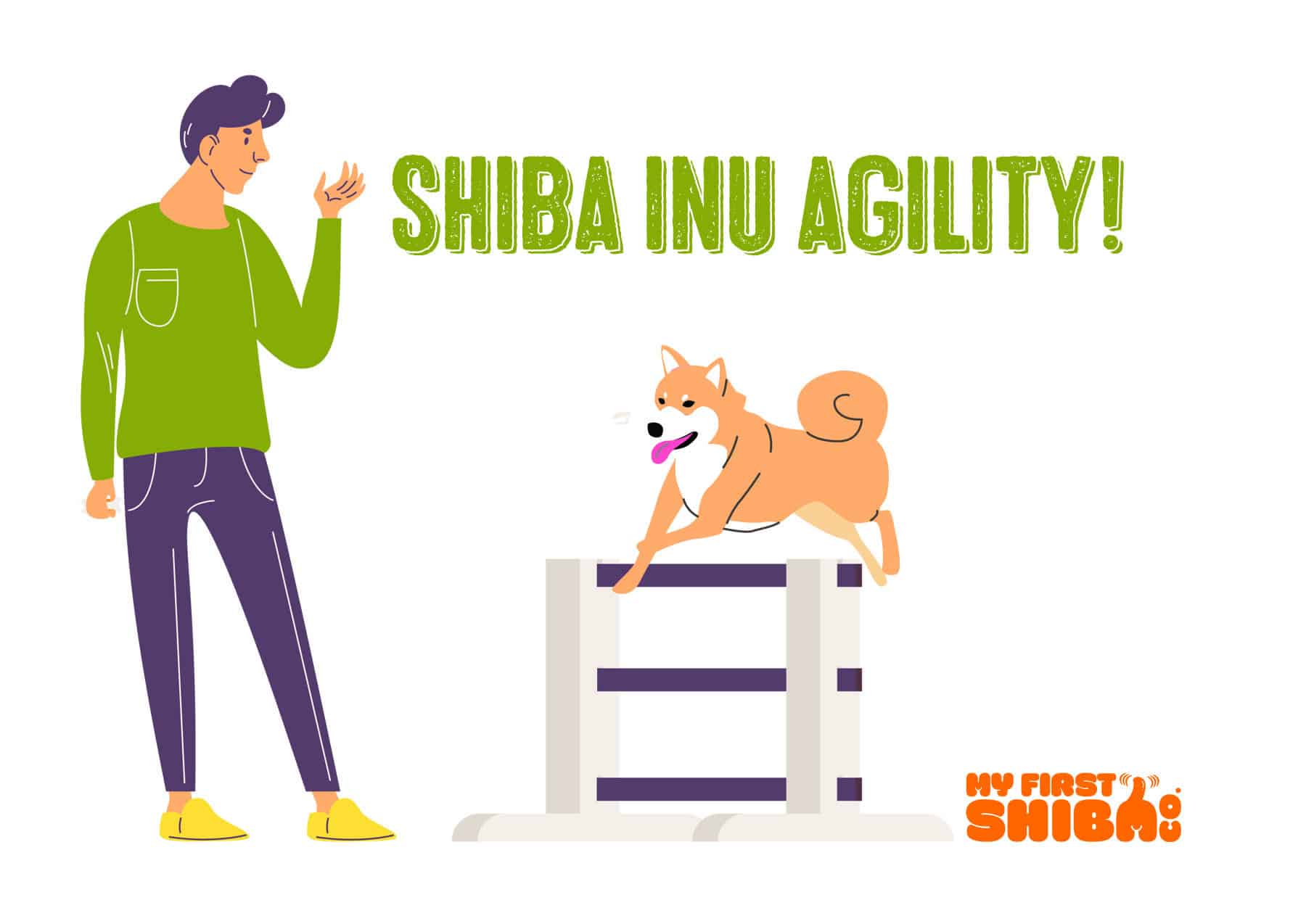
In fact, with the Shiba’s history of hunting duties, most Shibas would love the thrill of searching for rodents in barn hunt events and or scent training activities.
Active Shibas that love to run would do great in agility training which is an excellent way to provide exercise and stimulation at the same time.
7. Vocational Obedience Training
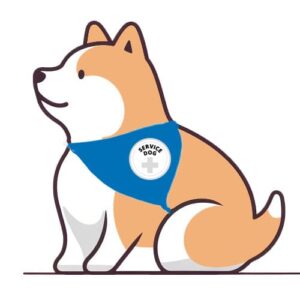
Purpose: Trains Shibas to take up roles such as search and rescue, assistance, or therapy.
Methods: Specialized training based on the role, often rigorous and detailed.
Benefits: Prepares Shibas to contribute to society by helping humans.
Due to a Shiba Inus typical disposition most of the typical vocational jobs for canines would not be suited for a Shiba Inu.
Working dogs with high drive and strong motivation to help humans are much more capable and suitable for these roles.
Yet, once in a while, certain Shibas can be a unicorn. Shiba Inus with a calm nature and good with people can possibly do well in a therapy dog role.
Also Shiba Inus who really enjoy scent work can participate in vocations that utilize this skill such as medical sniffers, bed bug sniffers, and agriculture sniffers.
Physical and Mental Exercise Needs for a Healthy Shiba
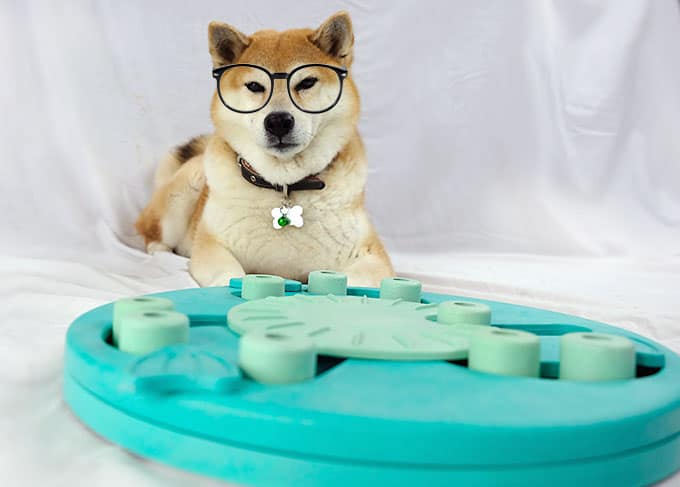
Providing your Shiba Inu with both physical and mental exercise is not only beneficial, but essential for your Shibas well-being and happiness.
Shiba Inus possess a lively intelligence that enjoys exploring and discovering stimulating experiences.
This means from the very first days of bringing your Shiba Inu puppy home, the goal should be to provide constant verbal and physical cues to help your new pup navigate their whole new world.
With this continuous dialogue and feedback, your Shiba will become smarter and keener than you could ever imagine a dog could be.
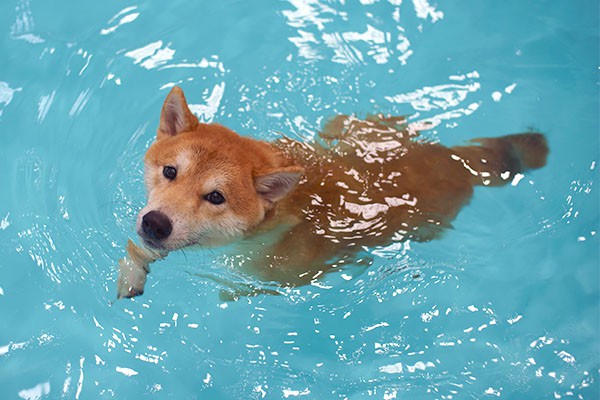
Shiba Inu Physical Exercise - Unleashing Their Inner Samurai
Shiba Inus are known for their bold and confident demeanor.
Their agile bodies and energetic spirits crave the freedom to explore, run, and play.
Regular physical exercise is crucial to keep them at their optimum health level.
Here are some important reasons why:
- Maintaining a Healthy Weight: Regular exercise helps in managing their weight, keeping obesity and related health issues at bay.
- Enhancing Muscular Strength and Flexibility: Exercise like running or playing fetch contributes to building muscle and maintaining their body’s flexibility, essential for preventing injuries.
- Promoting Cardiovascular Health: Physical activity is beneficial in maintaining a healthy heart and improving overall circulation.
Shiba Inu Mental Stimulation - Sharpening Their Astute Minds
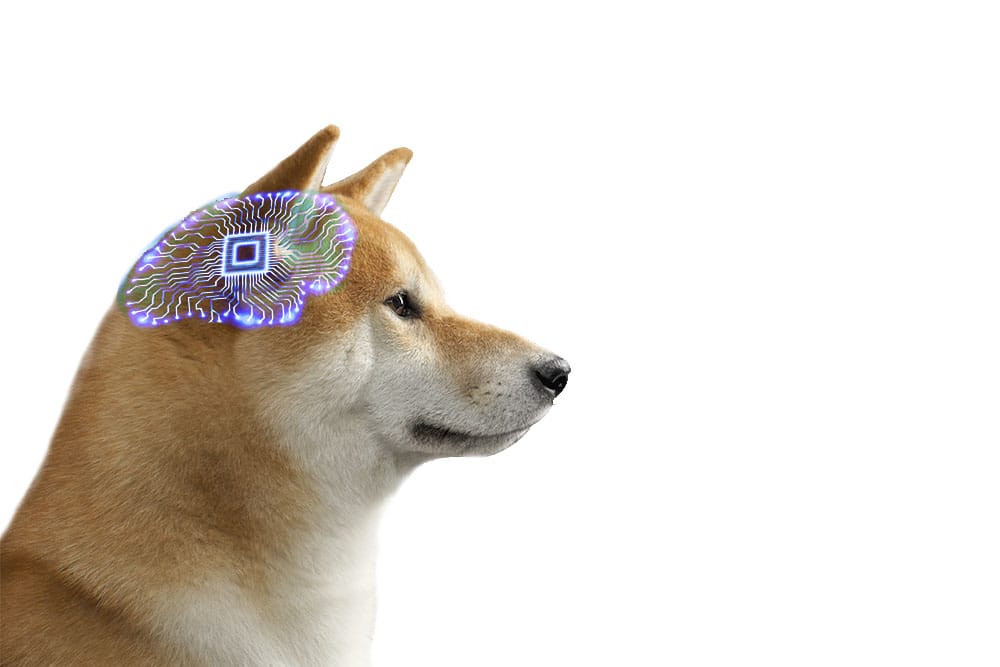
Shiba Inus are deceptively intelligent dogs.
While they might not be the type of dog that does silly tricks to people-please, they surely will enjoy activities that benefit them (puzzle games with food rewards, etc).
Mental exercise is as important as physical activity for this breed for the following reasons:
- Preventing Boredom and Related Issues: Mental stimulation curbs boredom, which can lead to unwanted behaviors such as excessive barking or chewing.
- Enhancing Problem-solving Skills: Engaging them in activities that challenge their minds, like puzzle toys or obedience training, helps in improving their problem-solving and reasoning skills.
- Building Confidence: Successfully navigating mental challenges can be a significant confidence booster for Shiba Inus, making them more adaptable and resilient.
Incorporating Exercise Into Daily / Weekly Routines
Ensuring that your Shiba Inu gets enough physical and mental exercise doesn’t have to be overwhelming.
Here are some strategies to seamlessly incorporate these into their daily routine:
- Regular Walks and Playtime: Make sure they get regular walks, and have time to play and run freely in safe, enclosed spaces.
- Interactive Toys and Games: Invest in toys that stimulate their mind, like puzzle feeders or interactive toys that require them to think and engage.
- Training Sessions: Regular training sessions, involving obedience, tricks, or agility, can be an excellent way to combine physical and mental exercise.
Adjusting To Your Shiba's Unique Needs
Remember that every Shiba Inu is unique, and so are their exercise needs.
Understand your dog's individual personality and health requirements, and tailor your approach accordingly.
Continuous observation and adjustment are key to finding a routine that works best for your furry friend.
A well-exercised Shiba Inu, both physically and mentally, is more likely to be happy, healthy, and a delightful companion.
By embracing the importance of exercise, you’re not only improving your dog’s quality of life but also strengthening the bond you share with your spirited Shiba Inu.
Is a Shiba Inu The Right Dog For You?
Shiba Inus are special dogs and to Shiba Inu owners - they’re perfect.
However, Shiba Inus are not dogs for everyone.
First time dog owners as well as dog owners that are not familiar with the needs of head-strong primitive breeds are not great matches for most Shiba Inus.
Granted not “all” Shiba Inus are head strong and difficult to train - in fact, many can be sweet and very obedient - but in general a lot of them are.
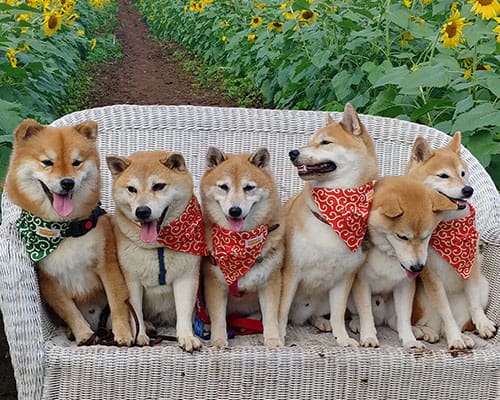
Additionally, most Shiba Inus are quite independent in nature and will not fit the needs of dog owners who crave affection and attention from their pup.
Instead their sometimes fierce independence may suit individuals who appreciate a dog with a mind of its own.
Most Shiba Inus will do well with an owner that is calm, confident, and perceptive to their needs.
Shiba Inus prefer balanced and somewhat predictable living conditions.
They’re not the type of dog to constantly need stimulation and attention - they value the peaceful, restful moments just as much as the exciting ones.
Living With a Shiba Inu - Lifestyle Considerations
Shiba Inus are resilient and adaptive dogs.
They can do just fine if an apartment setting as well as a house with a yard.
Despite a Shiba’s aloofness they still are social animals therefore you shouldn’t get a Shiba or any dog for that matter if you work full time and plan to leave your Shiba Inu at home all day with no company.
That’s simply not fair to the dog.
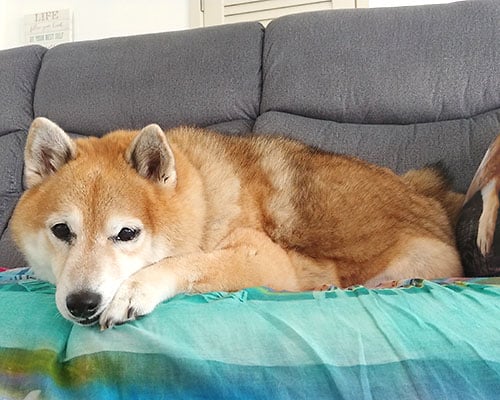
Instead wait for a time in your life when you can devote the time and attention a Shiba Inu deserves.
Alternatively if you can find someone trustworthy like a family member, friend, or doggy daycare to watch your Shiba Inu while you’re at work, that may be a suitable solution.
Most Shiba Inus from good breeding programs can get along with children and other pets - especially if socialized as a puppy.
Shiba Inu Sex Preference - Boys Vs Girls
Deciding on what sex of Shiba Inu is better suited for your lifestyle deserves careful consideration as there are quite a few differences between the two sexes.
In general, boys are friendlier and more affectionate while girls are more independent and aloof.
Boys pee and mark everywhere while girls will provide for cleaner smelling living areas.
The Cost of Owning a Shiba Inu
Aside from the initial cost of purchasing a Shiba Inu puppy, the yearly costs for caring for a Shiba is relatively low.
Shibas from good breeding programs are typically healthy dogs so the chance of getting big veterinary bills are on the lower side compared to other purebred dogs that tend to have more genetic-related illnesses.
Still, it may be a good idea to learn about and consider health insurance options for your Shiba - especially if you think you may not be able to cover a future costly medical bill.
The costliest part of owning a Shiba Inu is often their food, especially if you feed fresh.
If you need frequent daycare for your Shiba, those costs will likely be higher than food costs.
The ABC’s of Shiba Inu Puppies
Shiba Inu puppies, affectionately known as “potatoes” on various social media platforms are just so cute it’s hard to stand.
But just because they’re so stinking cute doesn’t mean that they’ll be a right fit for your lifestyle as well as your expectations.
You need to account for a Shiba’s personality type, their needs, your ability to train them, your living situation, and of course how you’re going to attain one.
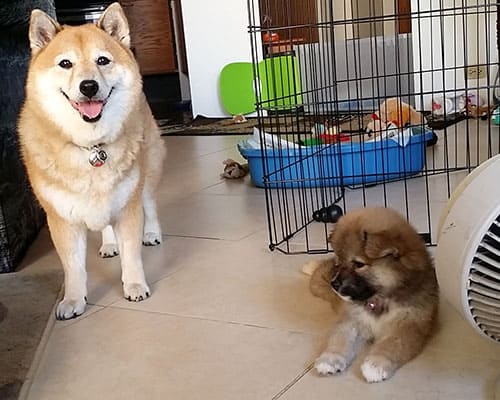
Finding a reputably-bred Shiba Inu puppy is difficult and costly, while finding a poorly-bred puppy-mill puppy is relatively easy as well as affordable.
Many unknowing first-time Shiba Inu owners purchase their Shiba puppies from puppy-mill type situations which perpetuates the cycle of animal cruelty.
On top of that, the Shiba puppies they receive are way off standard and often have health and temperament issues.
This is not a good thing.
Be vigilant and learn all you can about finding ethically-bred Shiba Inu puppies.
We’ll do our best to steer you to the most up-to-date information on the subject through our website and YouTube channel.
Adoption vs. Buying from a Breeder
Adoption offers a chance for a rewarding experience rescuing a Shiba that needs a loving home.
However, rescued Shiba Inus are often adults and may have extra needs that require owners who are experienced with the Shiba Inu breed.
On the flip side, a reputable breeder can offer a puppy that is likely to be healthy and have the looks and characteristics of a true Shiba Inu.
Shiba Inu puppies are also able to be trained and socialized from an early age decreasing the chance of temperament problems down the road.
It’s up to you to decide which choice fits your lifestyle and expectations.
If you do decide to get a puppy from a breeder, be sure to do your homework before committing to a puppy.
How to Choose a Reputable Breeder
If you're leaning towards a breeder, opt for one who's transparent about health checks and pedigree.
A reputable breeder prioritizes the well-being of the dogs over profit.
Be aware that most reputable Shiba Inu breeders in the U.S. do have waiting lists - with some much longer than others.
On the other hand, low quality Shiba breeders usually have puppies available and will always sell a pup to the first person that pays them - no background checks, home checks, etc.
We’ve written a lot about the topic of finding reputable and ethical Shiba Inu breeders - so check them out here:
Preparing Your Home for a Shiba Inu Puppy
Supplies For Your Shiba Inu Puppy
Getting ready to bring your new Shiba Inu puppy home is definitely exciting.
But it’s important to be ready for the amount of work you’ll be up against for the next few weeks and months.
Puppies poop and pee a lot, so it’s important to have all the necessary potty training supplies available as well as a plan on how you’re going to manage potty training.
You’re also going to need bedding materials, toys, cleaning materials, gates, x-pens, crates, collars, harnesses, leashes, grooming products - basically a LOT of stuff.
Puppy Proofing Your Home
Before bringing your Shiba pup home it’s absolutely critical that you set up a contained area where your puppy will be sleeping, eating, and pottying.
You do not. I repeat, do not want to give your puppy full reign of your home.
This is not only dangerous as puppies can get into all sorts of trouble eating things they shouldn’t be eating, but also counterproductive to potty training.
Instead your puppy should have a safe and comfortable area that is not too noisy and has a comfortable temperature.
Ideally this location is centralized so that your puppy can be near you and your family.
Even if you plan on keeping your puppy in a designated puppy area it’s still important to go through your home and put away dangerous things or things you don’t want your puppy to chew on.
Look for cleaning products, pest control items, wires, sharp objects, etc.
First Days with Your New Shiba Puppy
The first night with your new Shiba pup is typically exciting and exhausting at the same time.
If you planned ahead and have all the necessary supplies, the first night will go much much smoother.
Try to keep the new pup calm and not overly stimulated. Introduce puppy to his or her puppy area that should include a comfortable sleeping area, toys, water, and potty area.
You will eventually train your puppy to potty outside but young puppies need an immediate potty area where they will learn the concept of having a specific area to potty and not just anywhere they please.
Your breeder should have informed you on the type of food your puppy has been eating so be sure to have that available. You can slowly transition the puppy to new food when appropriate.
For the first few nights it’s probably a good idea to sleep in the near vicinity of the pup to help the pup not feel so isolated in a totally new environment.
Soft plush toys can act as alternative littermates as well. The Snuggle Buddy toy is made exactly for this purpose with extra features such as a beating heartbeat sound as well as a heat back that can be inserted into the plush.
Importance of Routine
Consistency is key when it comes to helping your Shiba Inu puppy adjust to their new home.
A regular schedule for eating, potty breaks, and playtime will aid in a smoother transition.
You can also begin to incorporate socialization as well as training sessions into your pups day in small bite-sized bits.
Consistency and positivity will go a long way into shaping a well-adjusted and obedient puppy.
By teaching proper life habits early, you’ll avoid a lot of hardships and frustration in the future. This is something that can’t be overstated.
Shiba Inu and The Family Unit
Building Trust and Respect With Your Shiba: A Lifelong Bond
Trust with your new Shiba won’t be built in a day, a week, and sometimes even months and or years.
It’s up to understand that raising a Shiba Inu is likely to be different from your past experiences with dogs.
Shibas are sensitive dogs that need a confident and assertive leader.
Yet they do not do well with absolutely any type of negative corrections and rough handling.
They can look up to you as their “master” but will expect you to guide and protect them throughout life in a way that is more egalitarian and not ruled by fear of punishment.
This is why you should only train your Shiba or any dog with positive reinforcement techniques.

Shiba Inus are a part of the family
In today’s day and age, the majority of leading dog behaviorists and experts shun any type of alpha-dominance type training that involves fear and punishment.
That’s because these types of training will only have your dog obey you due to fear of punishment.
However, the dog ends up not even liking you while suffering the mental consequences of these harsh training protocols.
Through positive reinforcement and mutual respect, you can foster a lifelong bond that stands the test of time.
Shiba Inus and Children
While Shibas are known for their independent nature, they are also known to be loyal family members that can establish strong bonds in their family unit.
Most Shiba Inus can peacefully coexist with children provided that training and socialization for both Shiba and child is achieved.
Shibas don’t like excessive excitement and erratic handling - proclivities that certain young children are well-versed at.
So it’s especially important to teach children that have these tendencies to dial it down a few notches.
Introducing a young Shiba Inu puppy into a family with children is understandably much easier than introducing an older Shiba Inu.
It’s up to you as a parent to assess the Shiba’s temperament before committing to making the Shiba a part of your family.
Some Shiba Inus that come from rescue situations have endured tough upbringings and are more likely to suffer from behavioral issues such as aggression, anxiety, and fear.
It’s best for these types of Shibas to go to homes without children - for both the families sake, as well as the Shiba’s sake.
Shiba Inus and Other Pets
Just as how you can socialize young Shibas to children, you can also socialize Shiba Inus to other pets.
All dogs are social animals so even the most independent and aloof Shiba will likely prefer to have another furry buddy instead of being the sole pet.
You’ll find a ton of videos showing Shiba Inus and cats bonding and basically just digging on each other to the nines. That’s likely due to their similar dispositions - calm, independent - with very high self-esteem.
One important factor to consider is that intact males and females do often exhibit aggression with the same sex - especially females.
If for some reason, you choose not to sterilize your Shiba, it’s best not to pair them with another dog of the same sex.
Making It A Family Affair
It’s important to make pet care a collective responsibility.
You can start by creating a plan to share Shiba-raising duties among family members to engage everyone in raising a happy, well-rounded Shiba.
Everyone should be on the same page so that your Shiba doesn’t get confused with training routines as well as expectations.
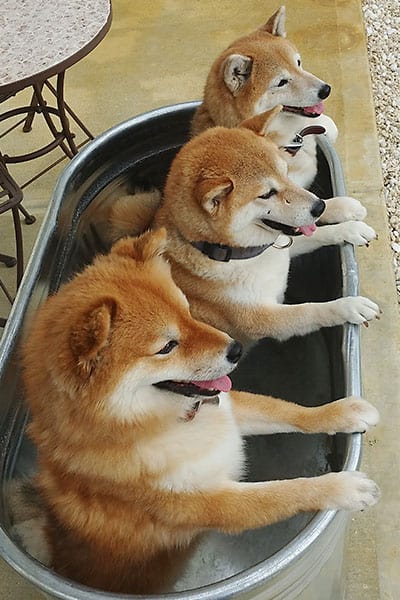
My three red Shiba Inus posing in a planer
For example, if dad is allowing Shiba to burst out of a normally closed doorway without first staying and waiting for the “o.k.” command - that could cause serious problems with safety down the road.
Additionally communication about understanding feeding and pottying protocols should be implemented as soon as possible.
FAQs: What Everyone Asks About Shiba Inus
Q: Are Shiba Inus high maintenance?
A: No, Shiba Inus are far from being high maintenance.
Because of their independence they don't need constant attention and supervision.
Socialized and trained Shiba Inus are easy to live with and care for.
But just because they are necessarily high maintenance doesn't mean that they don't "high expectations".
Q: Do Shiba Inus Like To Cuddle?
A: In general, not really.
There's always exceptions to the rule and some Shibas with especially sweet dispositions make for excellent snuggle buddies.
If you want a Shiba Inu with a good temperament the most important thing to do is find a reputable breeder that places an emphasis on breeding for good temperment.
Q: Do Shiba Inu Bark?
A: Yes, Shiba Inu bark.
Some people confuse Shiba Inus for Basenji's which are barkless dogs.
Shiba Inus are fortunately not excessive barkers and typically only bark when strangers are present or if they are responding do you while communicating (doing tricks, asking for food, complaining about something, etc).
Shibas aren't the type of dogs that annoyingly bark at trivial things.
Q: Do Shiba Inus Like To Swim?
A: No, most don't.
Shiba Inus were not bred to be water dogs therefore getting their fur wet is not high on their fun list.
Some adventerous Shiba Inus may take to water activities when introduced at a young age.
Q: Do Shiba Inus Make Good Apartment Dogs?
A: Shiba Inus are perfect dogs for apartment living!
Being not big, not not small, Shibas do well in apartment life due to their clean nature and calm temperament.
Shibas don't need excessive exercise and are good at acclimating to the chill life that apartment dwellers enjoy.
Q: Can Shiba Inus Live Outdoors?
A: Yes, provided that the outdoor living area is safe, clean, and temperate - most canines can live outdoors and lead healthy and happy lives.
Because in most situations, it's not where a dog lives that matter, but how a dog is treated on a daily basis that matters the most.
Of course, outdoor dogs still require ample interaction and meaningful affection from the humans living the home.
In Japan, it's traditionally not customary to have dogs kept indoors.
Times have changed and Japanese pet owners, especially those living in the city, now keep small dogs in their apartments when allowed.
Dog should never be "tied" or chained, not caged / cramped in small living conditions.
Q: Are Shiba Inus Picky Eaters?
A: Not particularly.
Shiba Inus are a breed that enjoys the finer things in life and they especially love good food.
Most Shibas provided a quality, nutritious diet that is rotated every so often shouldn't display finicky behavior on a consistent basis.
It's important to learn a Shibas personal eating preferences as some dogs do not like to eat too early in the day.
In general boy Shiba Inus are pickier than females.
Q: Are Shiba Inus The Worst Dog Ever?
A: No! Of course not, who would ask such a thing?
A lot of Internet "voices" apparently.
This question came about likely due to the fact that badly-bred Shiba Inus often suffer from serious temperament issues that of course, makes them look like pretty sucky dogs.
But if you take away the "badly-bred" part of the equation by being a responsible human being - Shibas are among some of the "best" dogs ever
Q: What is the Meaning of Shiba Inu?
A: The exact origin of the word Shiba Inu is unknown but one of the main theories is that the world Shiba refers to brushwood.
And this could refer to the fact that Shibas would hunt in the brushwood for small game in the past.
Or possibly due to the similar color of brushwood leaves and the red Shiba Inu coat. "Inu" in Japanese simply means dog.
Another possible theory is that the word Shiba was a word for "small" in an old Japanese dialect.
Q: Do Shiba Inus Like Snow?
A: Yes, since Shiba Inus are double-coated dog breeds that originated in the frigid conditions of mountainous territories in Japan, they are well versed to handle snowy conditions provided that they are healthy and possess a full coat.
However, it's important to avoid over-exposure and monitor your Shiba comfort level and time in cold condition.
Depending on the age and health of your Shiba Inu, protective gear such as coats and or dog boots may be necessary.
Q: Are Shiba Inus Related To Wolves?
A: Yes, all canines are descendents of wolves. The exact species of wolf is being debated despite numerous studies throughout the years. Some studies peg grey wolves as the main ancestor while other studies indicate that they are not.
Q: Are Two Shibas Better Than One?
A: Yes, dogs are social animals and prefer to be in presence of other dogs rather than being alone.
This is especially true if there are times when you need to leave your Shiba Inu at home and there are no other humans around.
Shibas should never be left home alone for long periods of time. It's kind of similar to solitary confinement and not good for a dog's mental and physical health.
If you work away from home on a full-time basis and are thinking about bringing a Shiba Inu into your life BUT have no one else to watch your dog while you are away it's best to wait for a better time.
Alternatively you can consider dog care options but the monthly cost will be considerable.
Q: What Is a Shiba Inu SCREAM About?
Shiba Inus can put on a lot of drama - especially during certain grooming procedures that they're not fans of.
This can induce high-pitched and LOUD protestations in the form of the infamous Shiba scream.
While it may sound terrifying, it's actually not as bad it sounds.
Shibas just have a way of wanting to be "heard" quickly so we humans can make it better.
Q: Are Shiba Inus Hard To Train?
A: Yes, No.... Basically, it depends.
Shiba Inus bred from quality breeding programs and are socialized and begin training at a young age are generally fairly easy to chain provided that you take the time to understand your individual Shibas motivation.
Shibas can be dogs that don't see the point of complying to repetitive tasks for no apparent reason. This is why positive reinforcement with food treat work well for Shibas.
Q: Was Hachi The Dog a Shiba Inu?
A: No, Hachi was a beloved Akita Inu.
Both Akita Inus and Shiba Inus are in the group of the six native dog breeds of Japan.
However aside from the massive size difference, Shibas and Akitas look remarkably similar.
In the movie Hachiko starring Richard Gere, a Shiba inu was used to play the role of Hachiko as a puppy.
